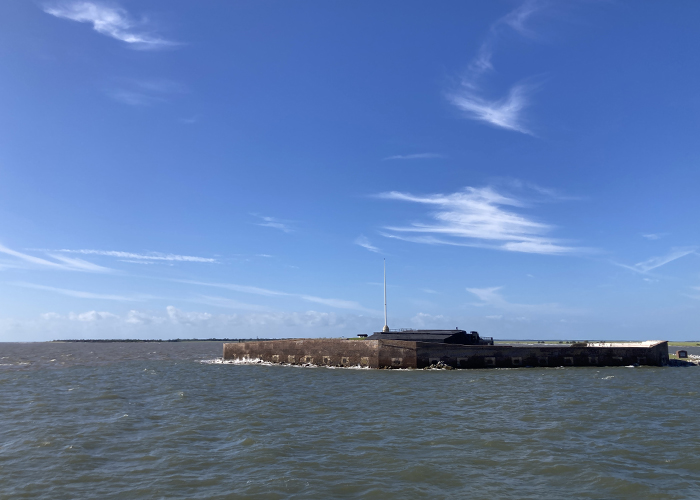 More 2023 Adventures |
Charleston, SC → Savannah, GA 164.8 mi (265.2 km) |
 Next Day |
I do declare, everyone!
This beaver’s getting too old for overnight flights, and yet, that’s just what I’ve done, LAX to CHS to set foot in South Carolina for the first time! I’ve got lots of exploring to do here in the Palmetto State, starting with the southern part of Charleston.
Here, the beginning of my adventure was marked by the end for semi-famous Gentleman Pirate, Stede Bonnet, who was hanged here with 29 of his crew members in autumn of 1718! A rich, bored landowner from Barbados, Captain Bonnet went from amateur to pirate to convicted criminal in the span of two years, tangling with the likes of Blackbeard along the way!
 |
For sure, the seas around Charleston have known lots of trouble since its founding in 1670. Here in White Point Park, filled with hopping, honking American bitterns, a statue commemorated General William Moultrie, a Charleston local who defended the harbor from British attack on June 28, 1776 out of a fort built from sand and logs. The little fort that took his name has grown over the years, and I’ll talk more about it after I visit a few more historic sites here in Charleston.
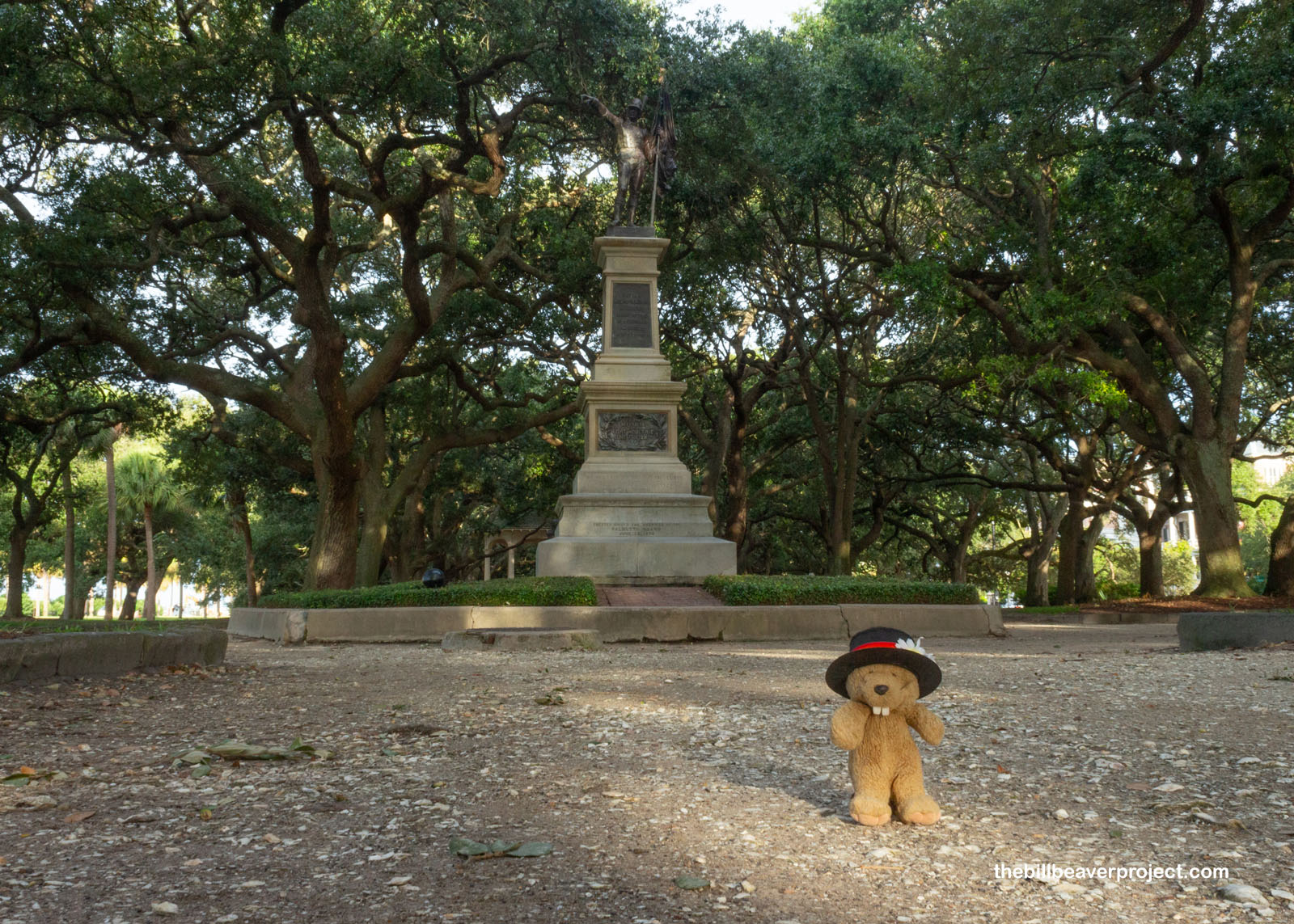 |
I strolled north along the Battery, a seawall built to defend the city against storms and high tides, and where defensive artillery was mounted during the Civil War. Today, it’s on the national register, but it’s being repaired. Just two days ago, Tropical Storm Idalia blew through South Carolina with a tidal surge that breached the Battery and flooded downtown Charleston! Today, there wasn’t a cloud in the sky, and the city had done an amazing job of clearing out the flood water!
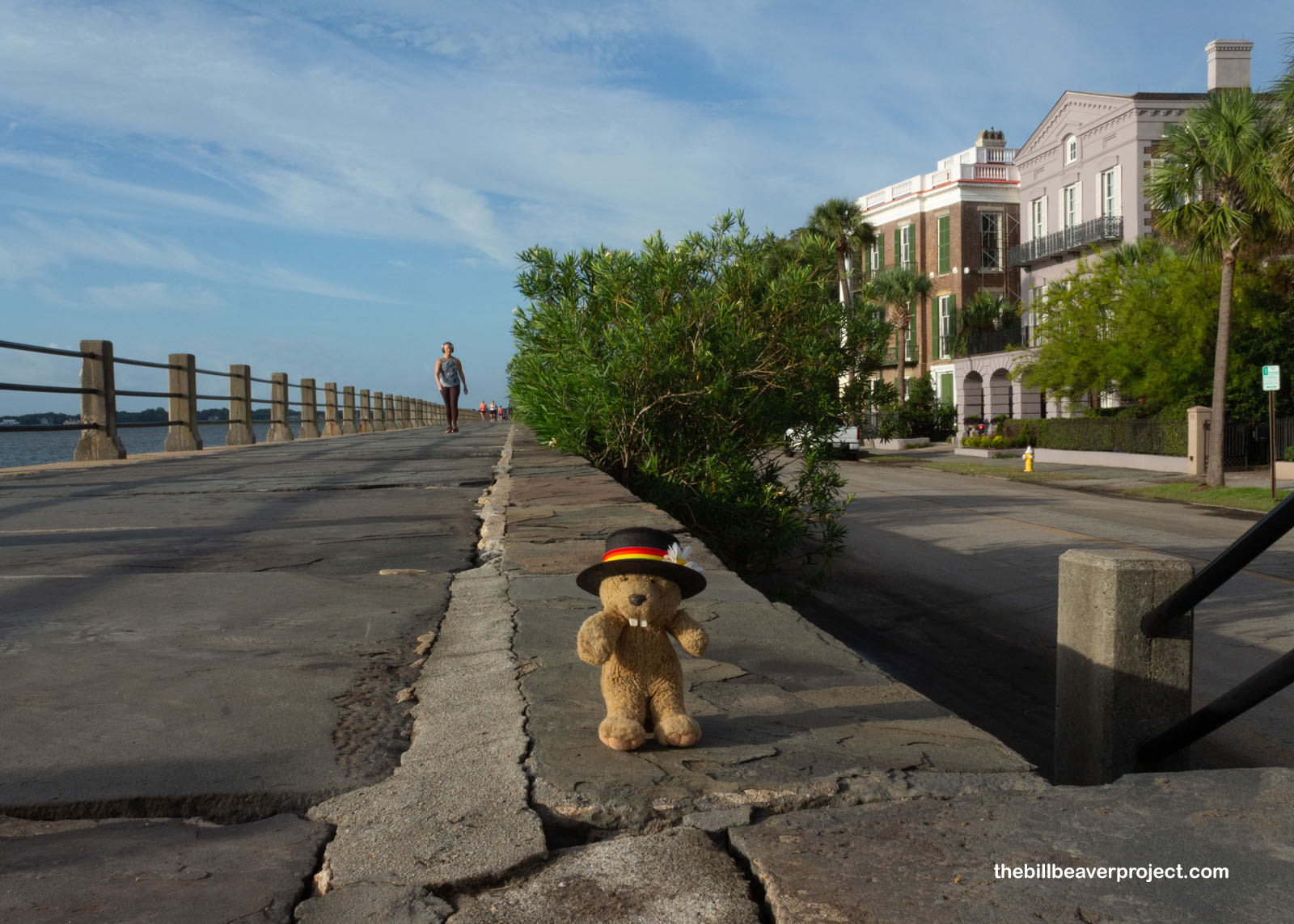 |
Continuing my journey, I encountered my first South Carolina historical marker, commemorating the legendary exploits of Robert Smalls! Born into slavery, Mr. Smalls commandeered the CSS Planter transport ship on May 13, 1862 while its white officers were carousing onshore, wearing a straw hat like the captain’s to avoid suspicion. He picked up the families of his shipmates, who were waiting at a nearby wharf, and successfully cruised past five Confederate harbor forts to reach the Union ships, and freedom, near Hilton Head Island! More on that later!
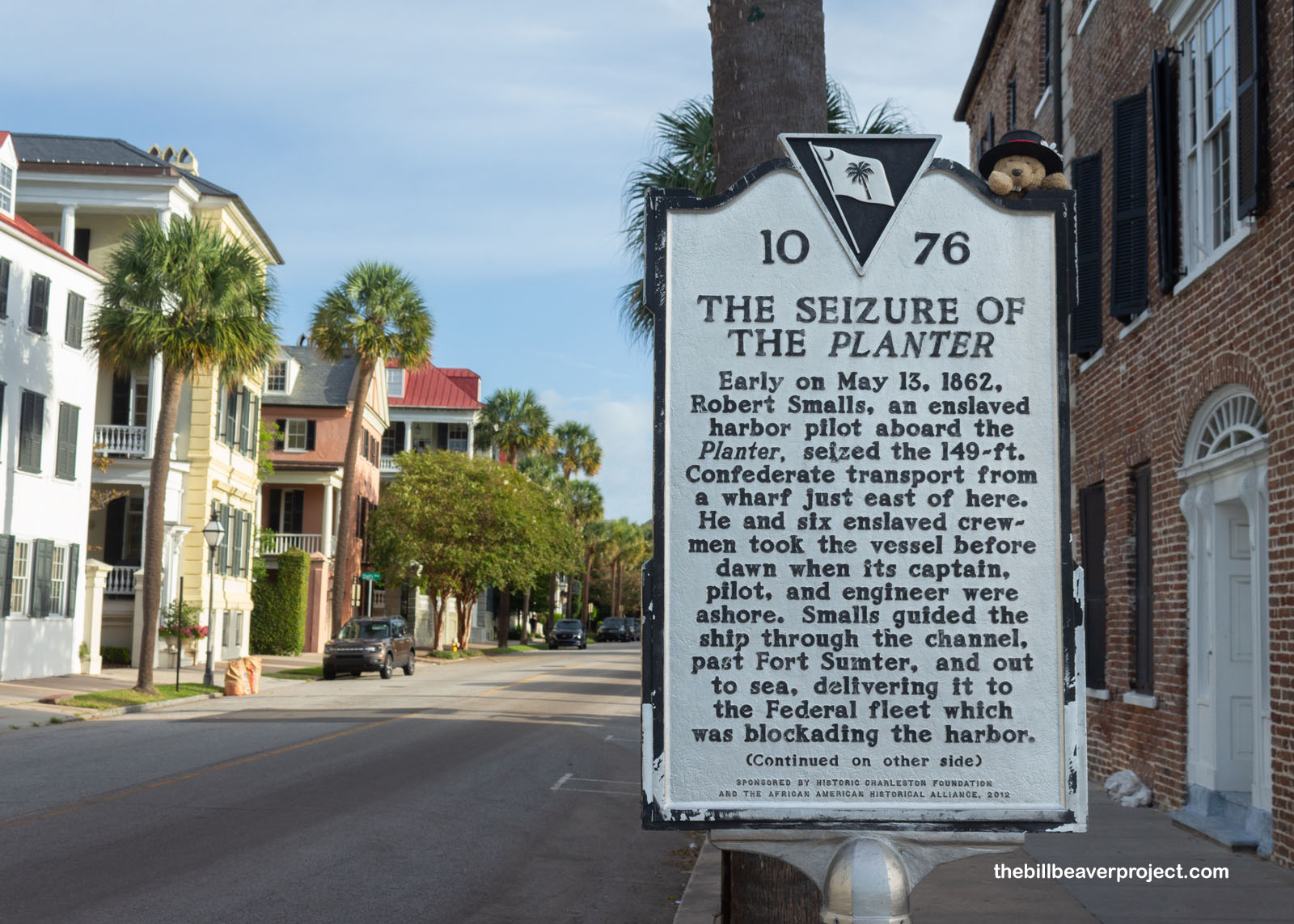 |
Did you know that Charleston (Charles Town) was the only walled city built by the British in North America? Between 1690 and 1711, 8- to 10-foot brick walls went up along the battery, creating a formidable defense of the city, with four bastions on each corner and land access through a drawbridge! It was quite the sight, but in lots of ways, it was like a shell around a growing city. Within twenty years, the walls came down so Charleston could spread out!
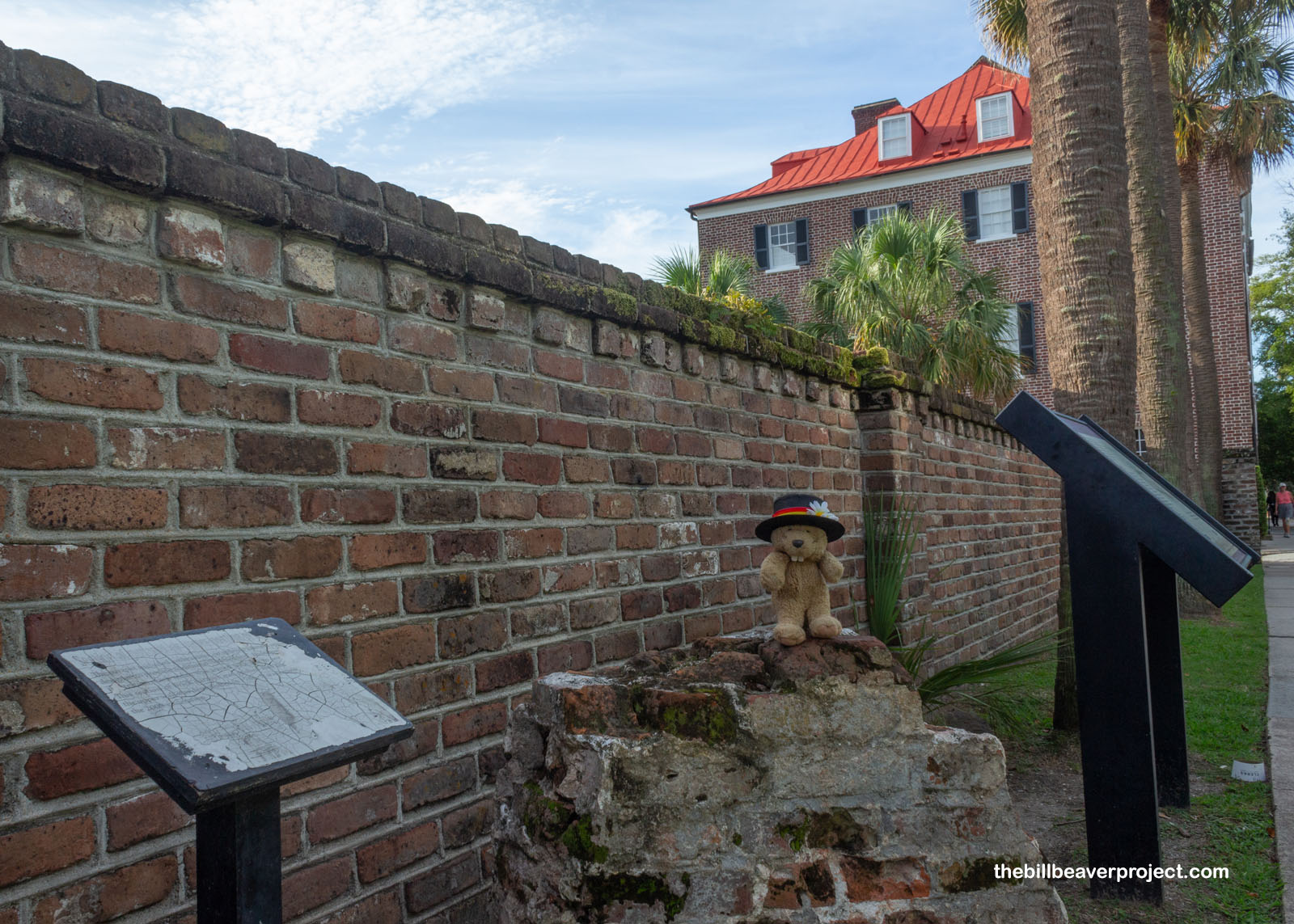 |
Charleston’s changed face a number of times since then, and nowhere is that clearer than Rainbow Row! This row of Georgian homes was reduced to the level of a slum after the Civil War until Judge Lionel and Dorothy Legge bought them up in 1931. Mrs. Legge painted the row pastel pink, and others would follow suit until this collection of late-18th Century houses became one of the city’s most famous landmarks!
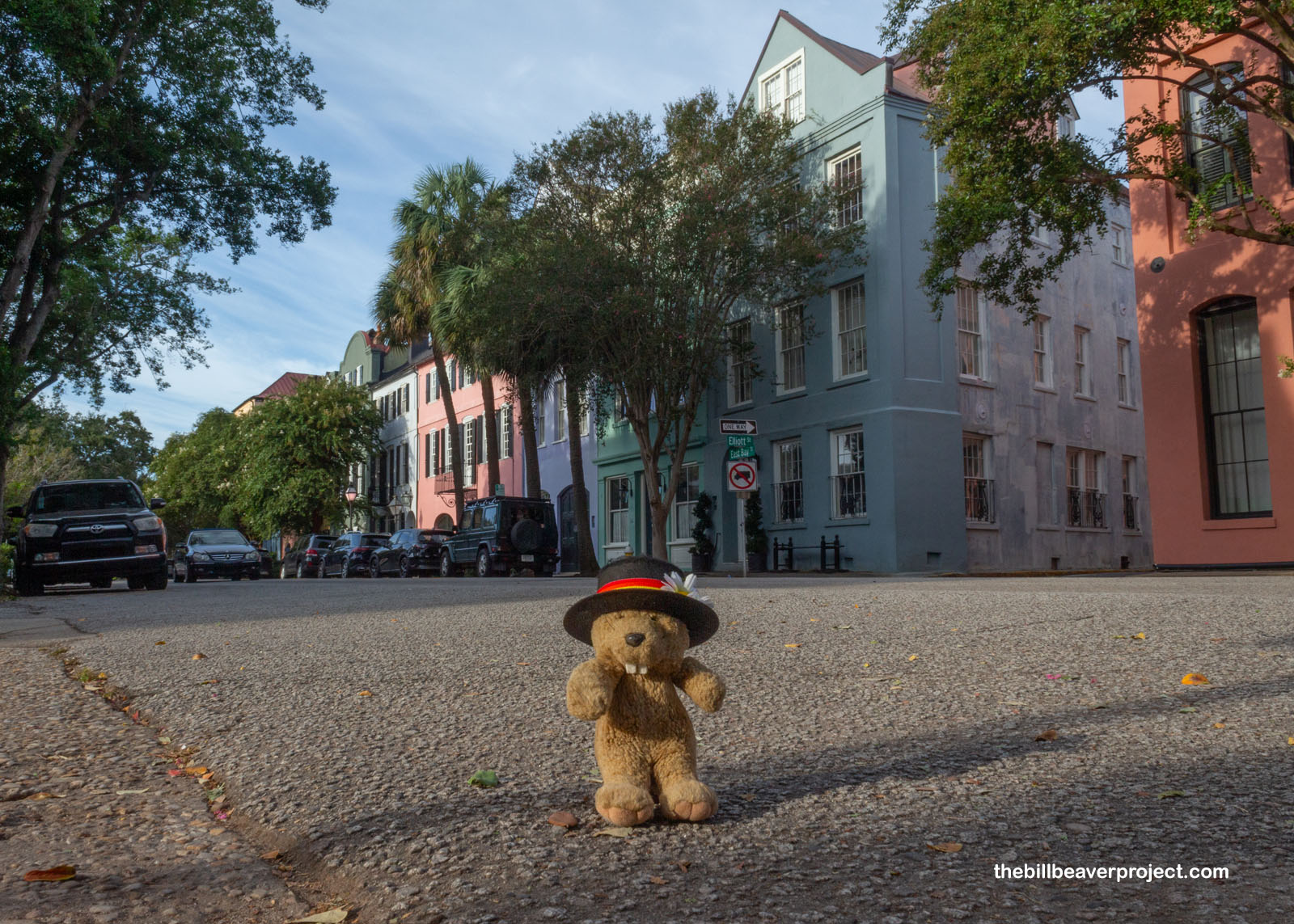 |
The Row shares space with the oldest liquor store in the USA, today the Tavern at Rainbow Row, formerly the Seafarer’s Tavern! Since 1686, various incarnations of this shop have served soldiers, pirates, and Prohibition-dodgers with the help of “blind tiger” tunnels leading from the shop across town!
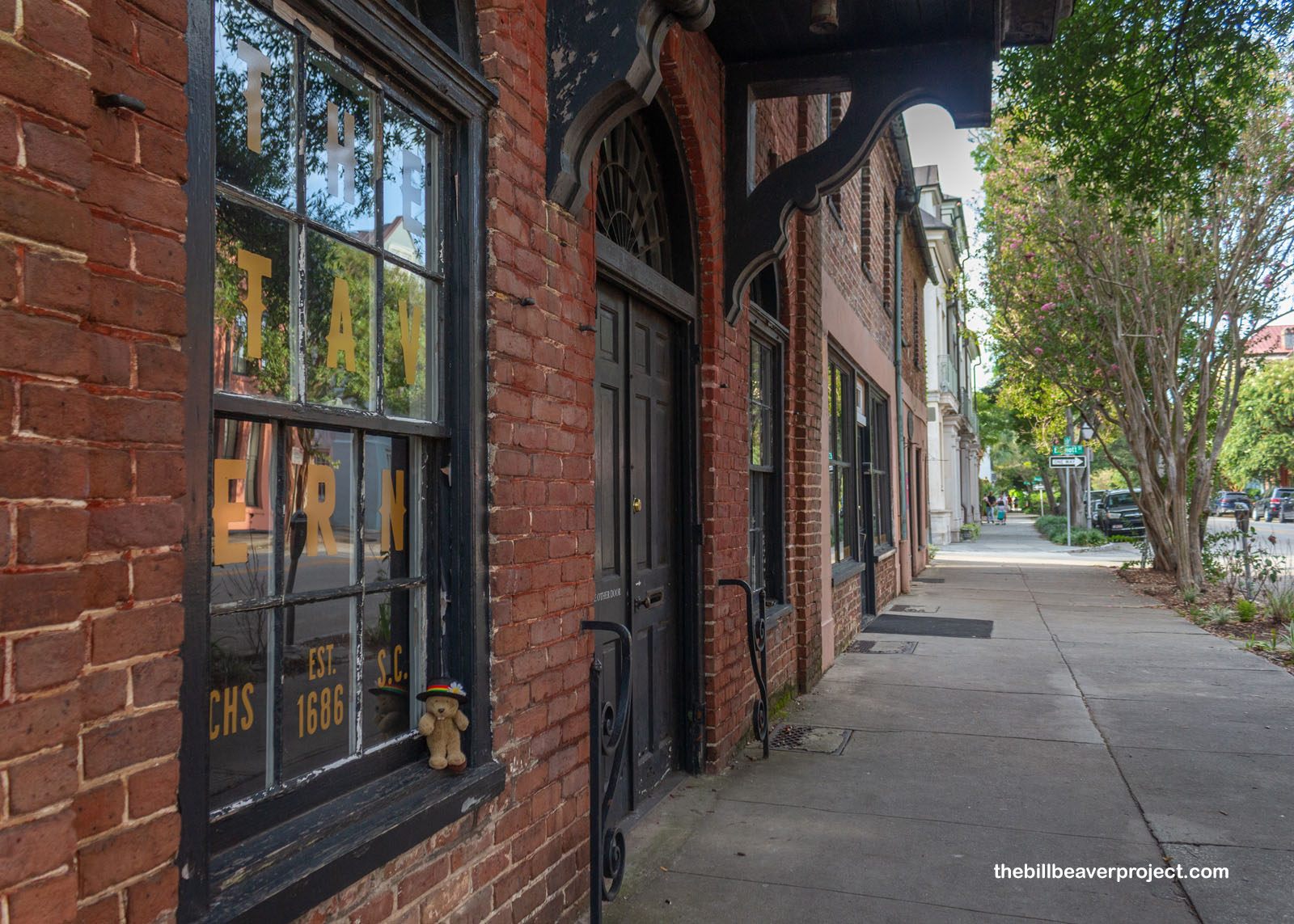 |
Of course, all this wealth and merriment had to come from somewhere, and Charleston being a major Southern city, it sailed in on the back of slave labor. South Carolina was the first state to secede when abolition-minded Abraham Lincoln won the election of 1860, and Charleston was a major slave port, with up to 40% of enslaved folks setting foot in the USA for the first time right here. Today, there’s a historical marker at the site where folks were auctioned, as well as a museum built into Thomas Ryan’s 1859 slave mart. Redesigned in 1938 and now Nationally Registered, this museum was the first of its kind, focusing on African-American slavery and run by some of their descendants!
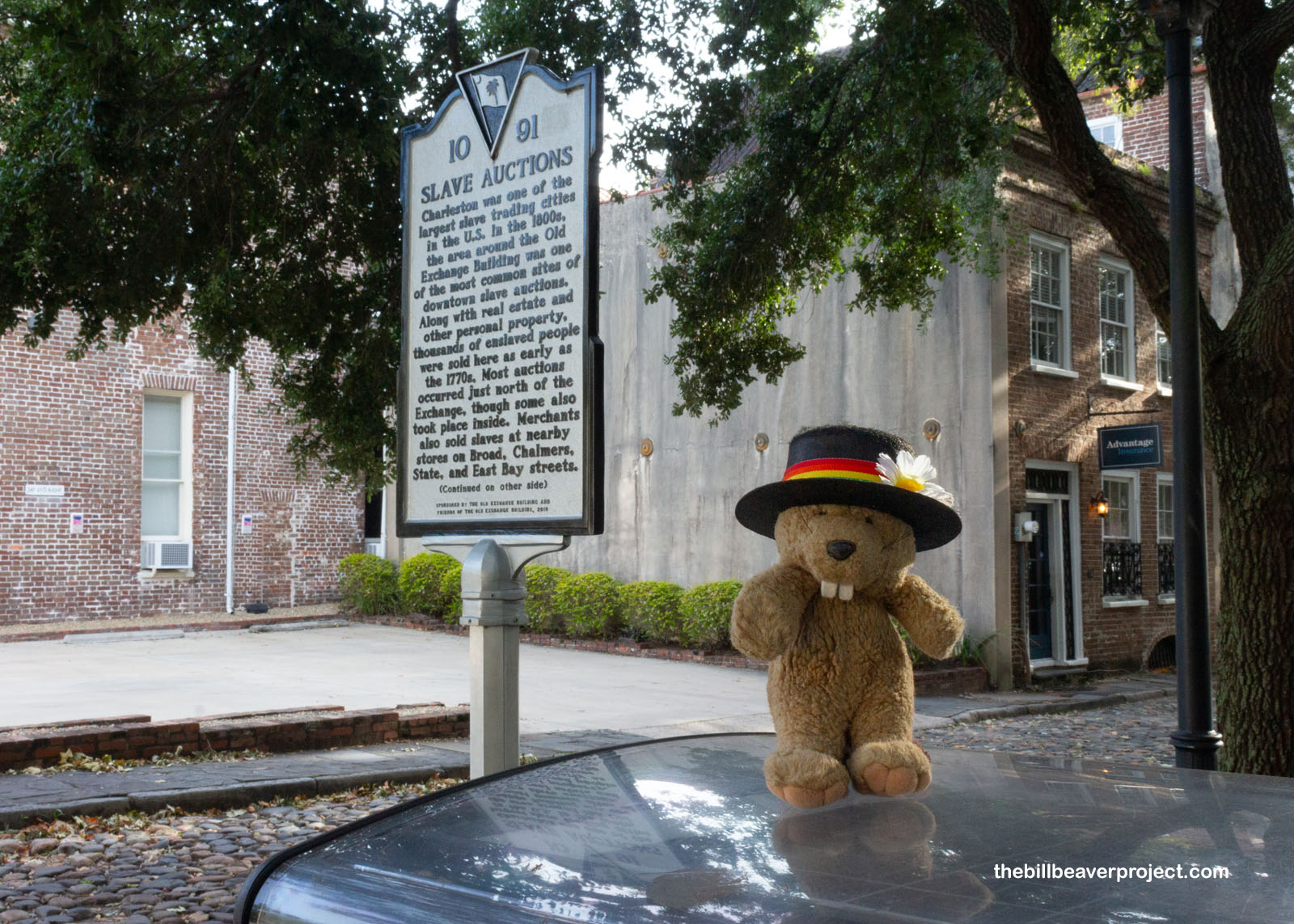 |
 |
Charleston really is a history-packed city, but I’d packed in all I could with the time I had available. After all, I’d booked a ferry to Fort Sumter leaving at 9:30! But it would be a crime to bypass Charleston’s Pineapple Fountain! Introduced here from the Caribbean, pineapples came to symbolize hospitality across the South, where folks would gift them to important guests. Here in Waterfront Park, this spectacular fountain is more symbolic of renewal, since it was installed within a year after the devastating Hurricane Hugo!
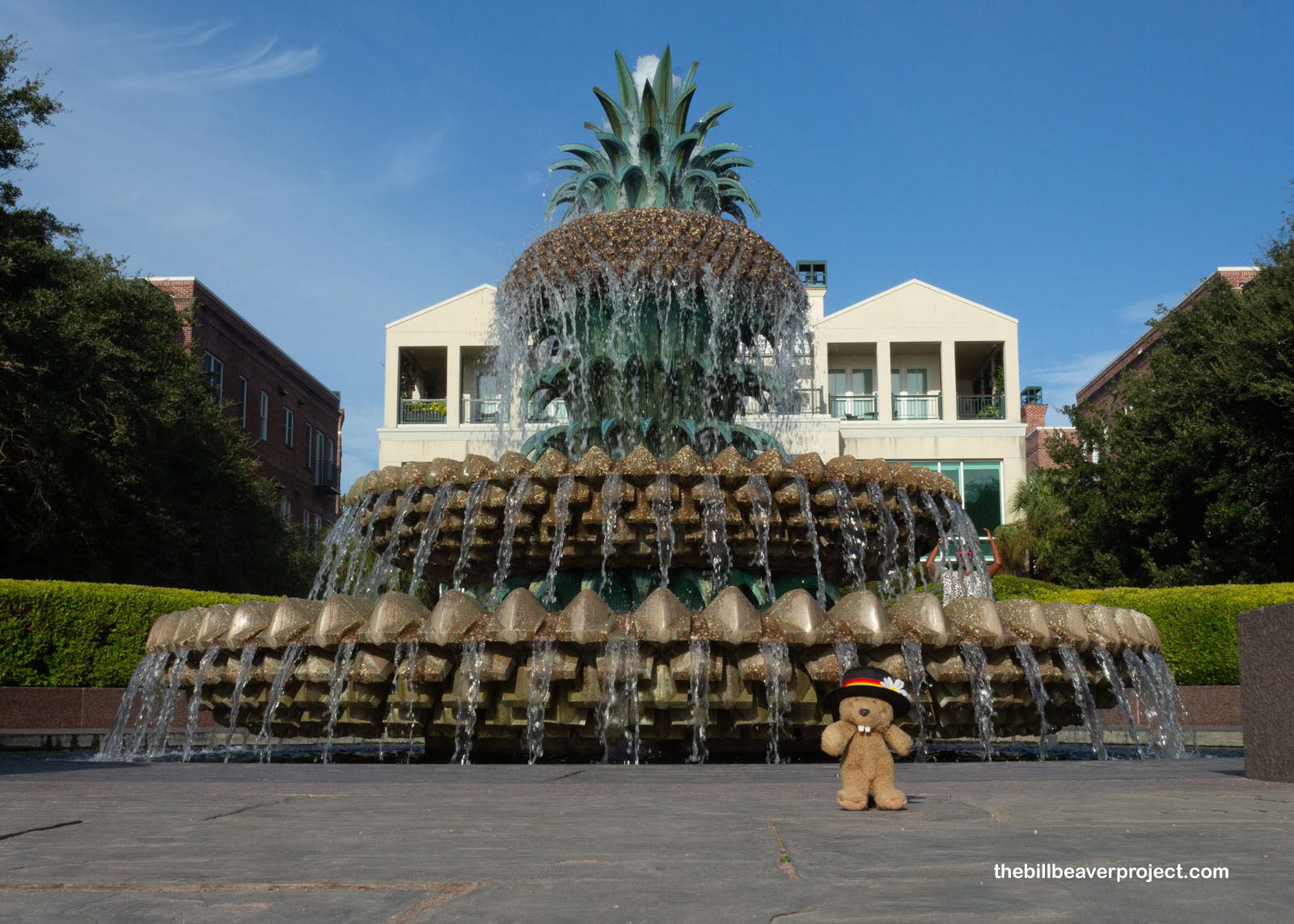 |
I careened into Liberty Square just in time for my ferry. Today, I would be touring my next two national park sites, starting with Fort Sumter and Fort Moultrie National Historical Park! This is a recent re-designation from March 12, 2019! See, this was declared Fort Sumter National Monument in 1948, and Fort Moultrie was added to the monument in 1960. Sadly for Fort Moultrie, it got left out of the monument name for 59 years and was kind of overlooked. The re-designation puts it back in the spotlight, even if it makes the name super long!
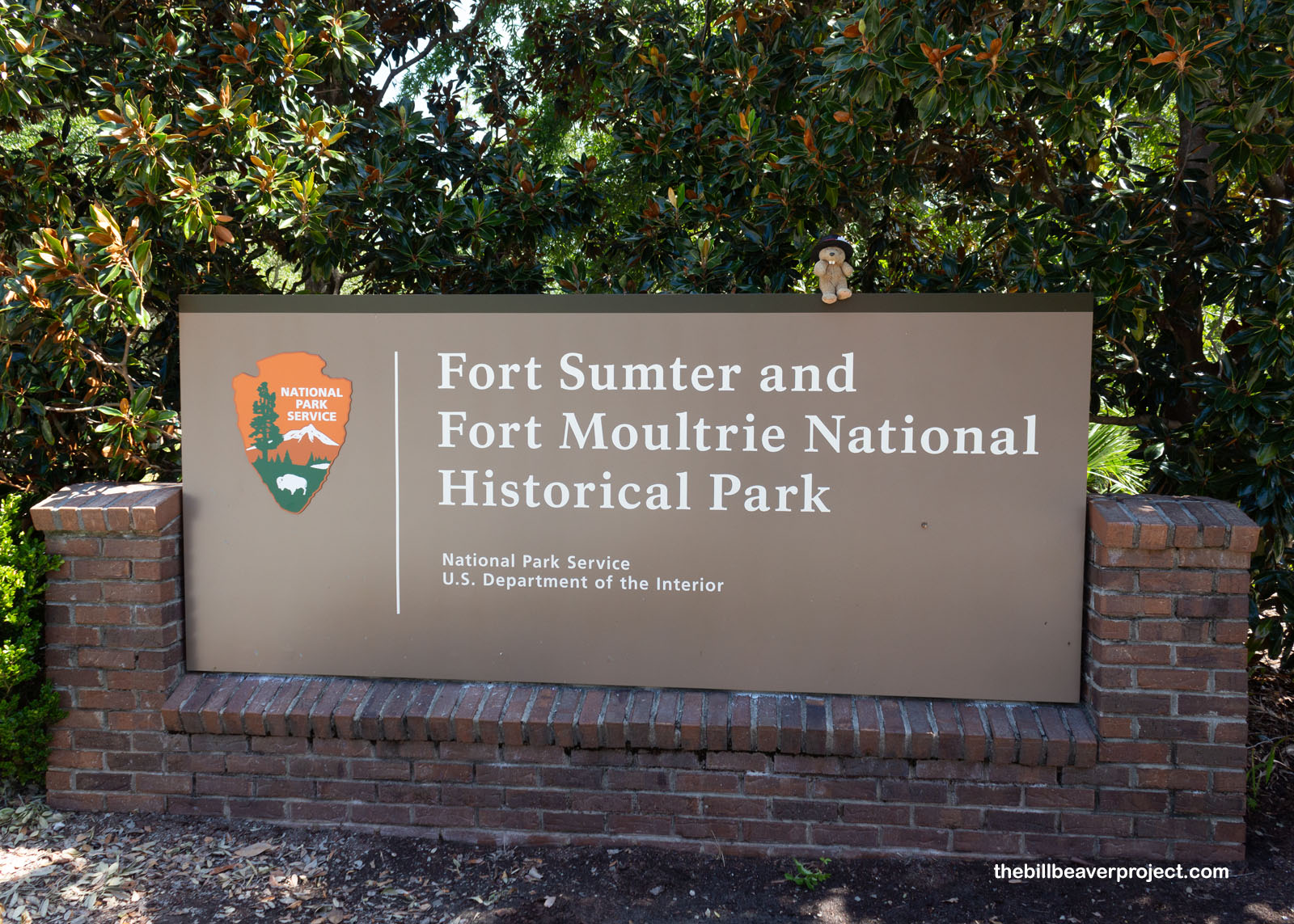 |
At 9:30 sharp, the Spirit of the Lowcountry embarked on its roughly 4-mile journey to Fort Sumter, stationed on a tiny island in the middle of Charleston Harbor. The ranger on board regaled folks with the island’s history and hinted that its future is in peril! The Lowcountry being low, it’s very vulnerable to rising sea levels from climate change, so we don’t know how long it will be before this famous fort has to be visited by SCUBA, rather than ferry!
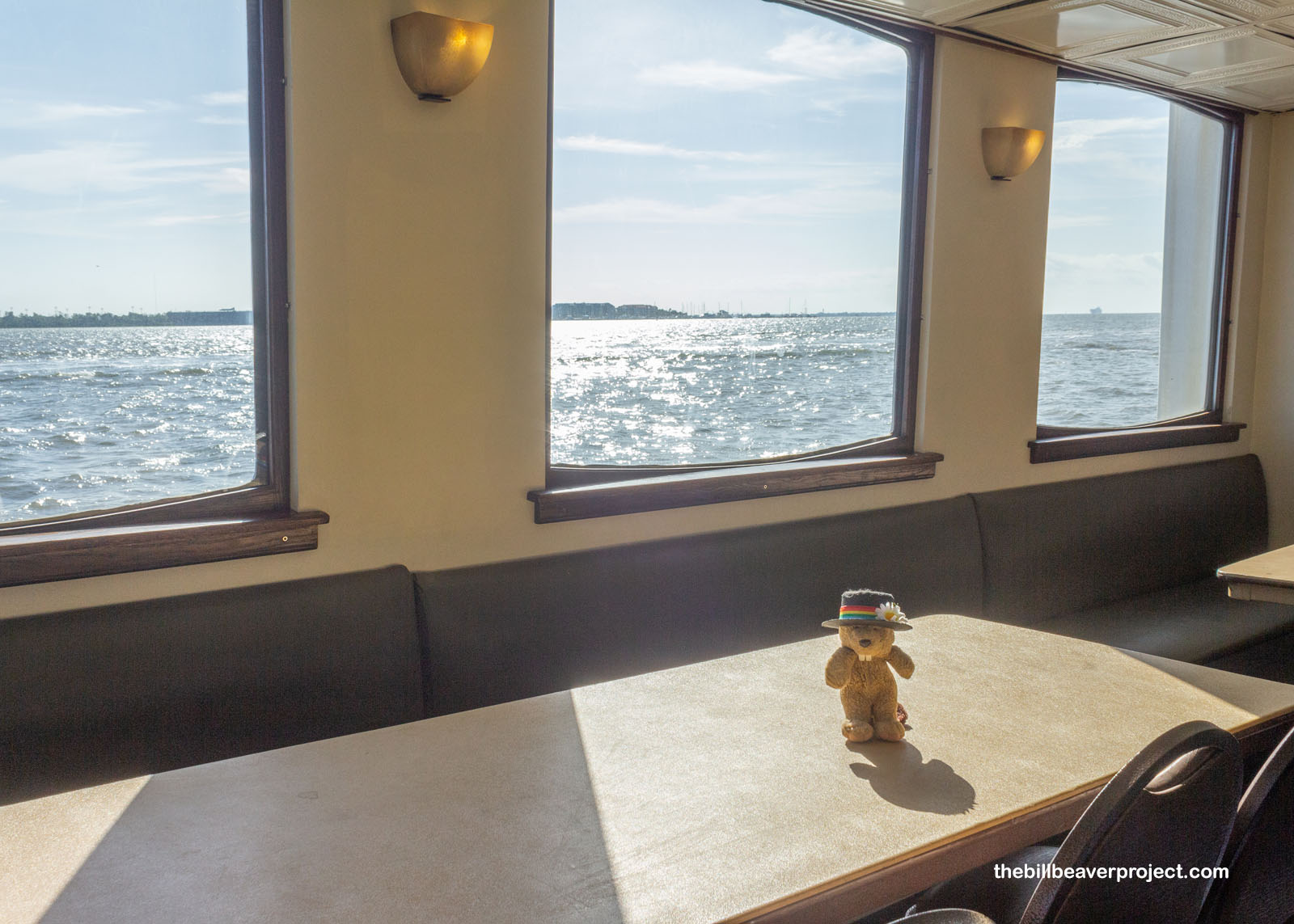 |
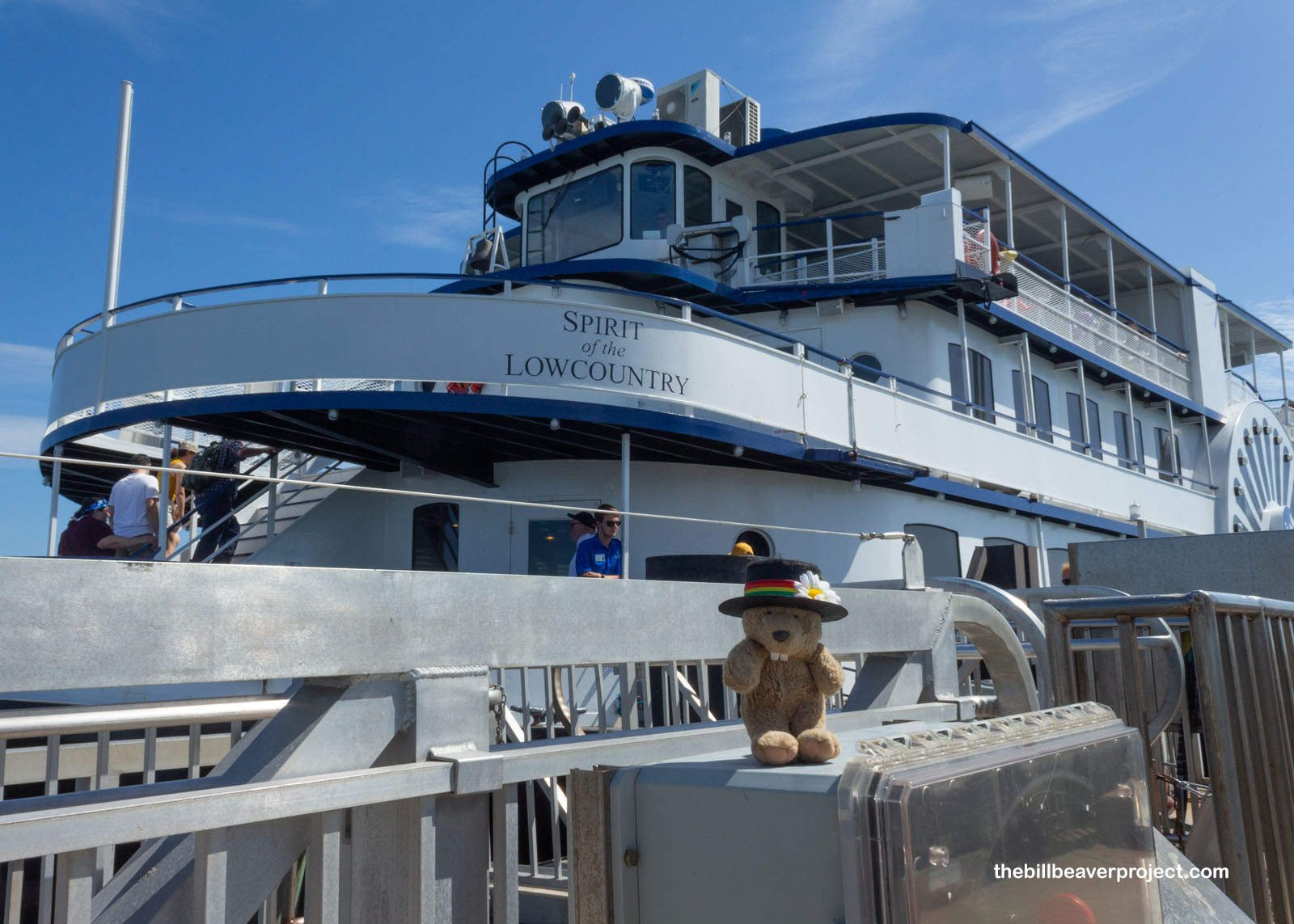 |
In any case, today, Fort Sumter is still well above water, as it was when the Civil War ignited here on April 12, 1861! See, six days after South Carolina became the first state to secede, locals wanted Union forces out, out, out! That started with Fort Sumter, which the state had given over to the federal government in 1836, and which it wanted back! After two days of bombardment, the Union, under Major Robert Anderson, gave up control, and the Civil War was underway!
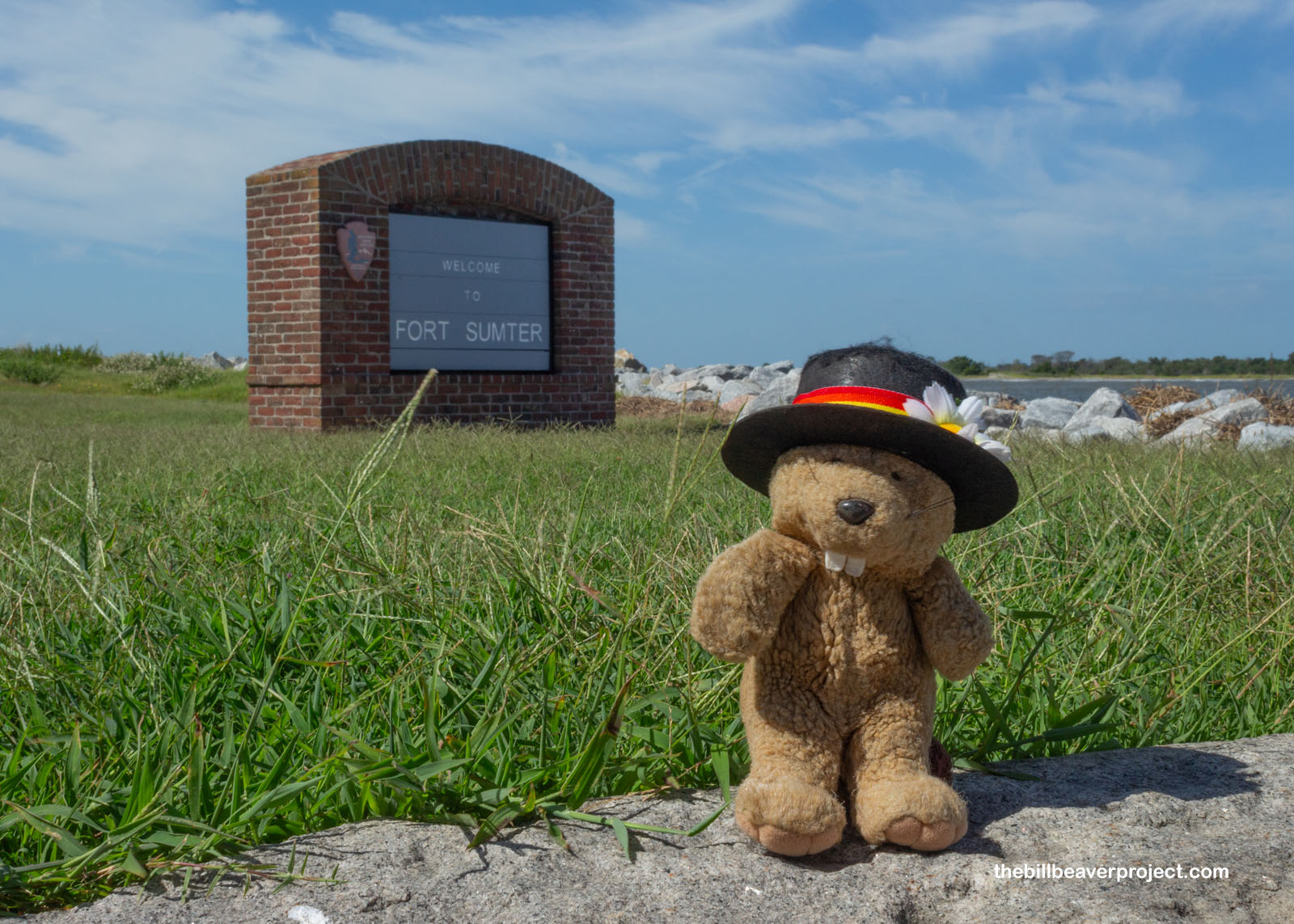 |
Being the first group of the day, the ranger invited folks to raise the 33-star battle flag that had been flying the day Fort Sumter was taken. The original flag fell during the bombardment, was rescued by Second Lieutenant Norman J. Hall, and toured the North to drum up patriotism (and cash) for the war effort!
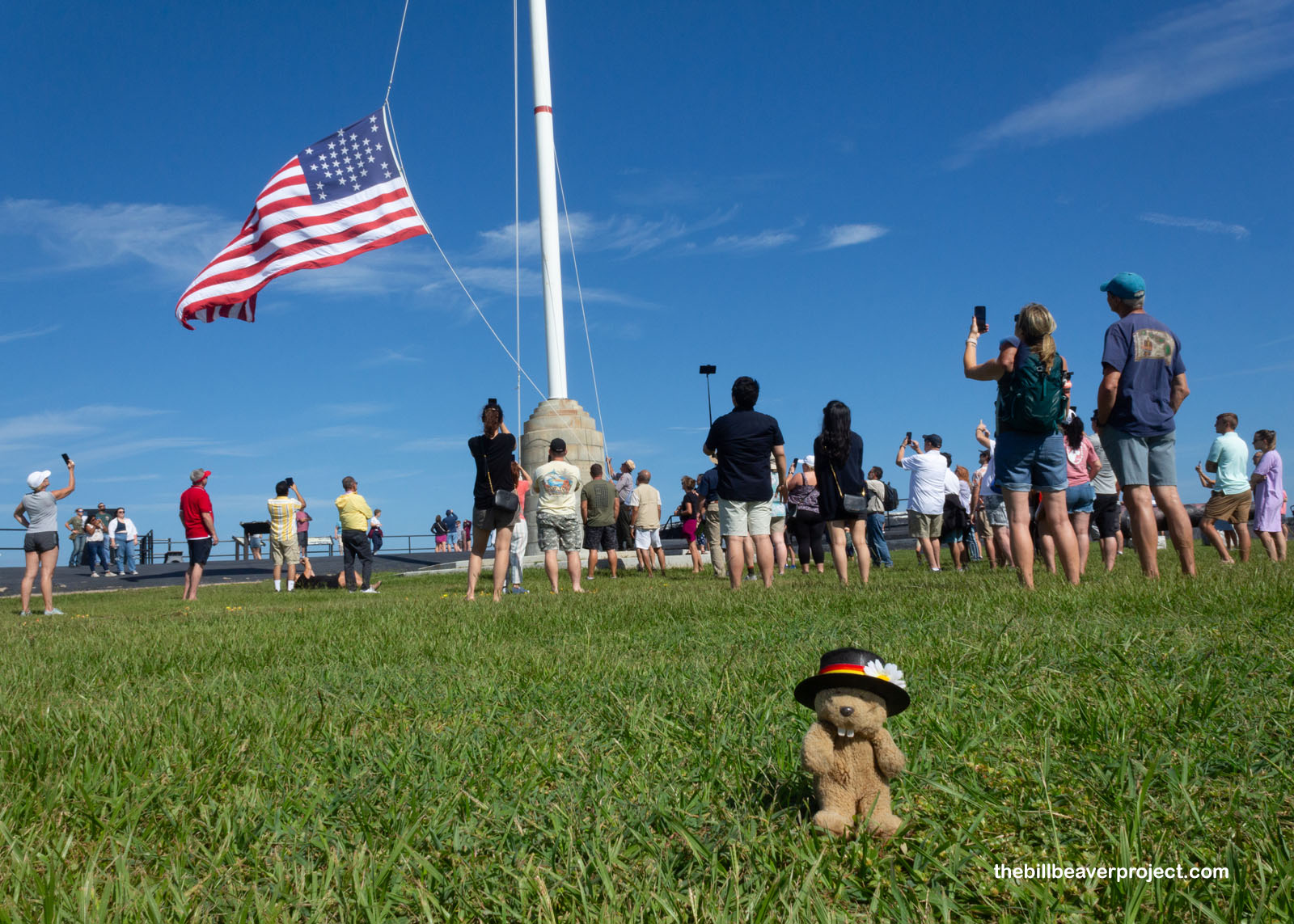 |
At the time of Confederate attack, Fort Sumter wasn’t even finished! Even though it was built in response to the War of 1812 (named for Thomas Sumter, who’d deterred Lord Cornwallis from the Carolinas), it was remote and underfunded, making construction super slow. Even worse, President Buchanan had downsized the military, which left the fort with half the cannons, little ammunition, and no fuses at all for their explosive shells!
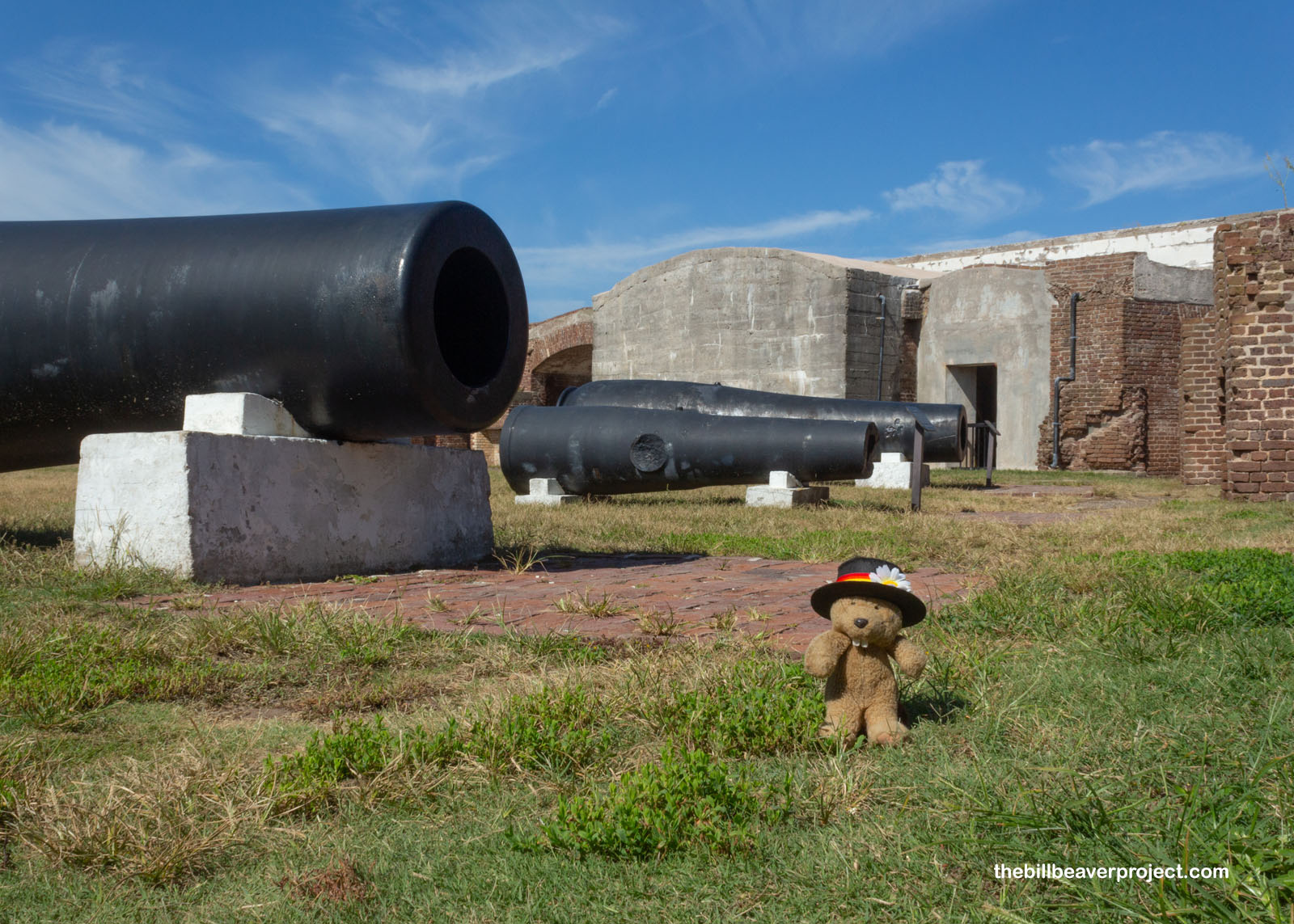 |
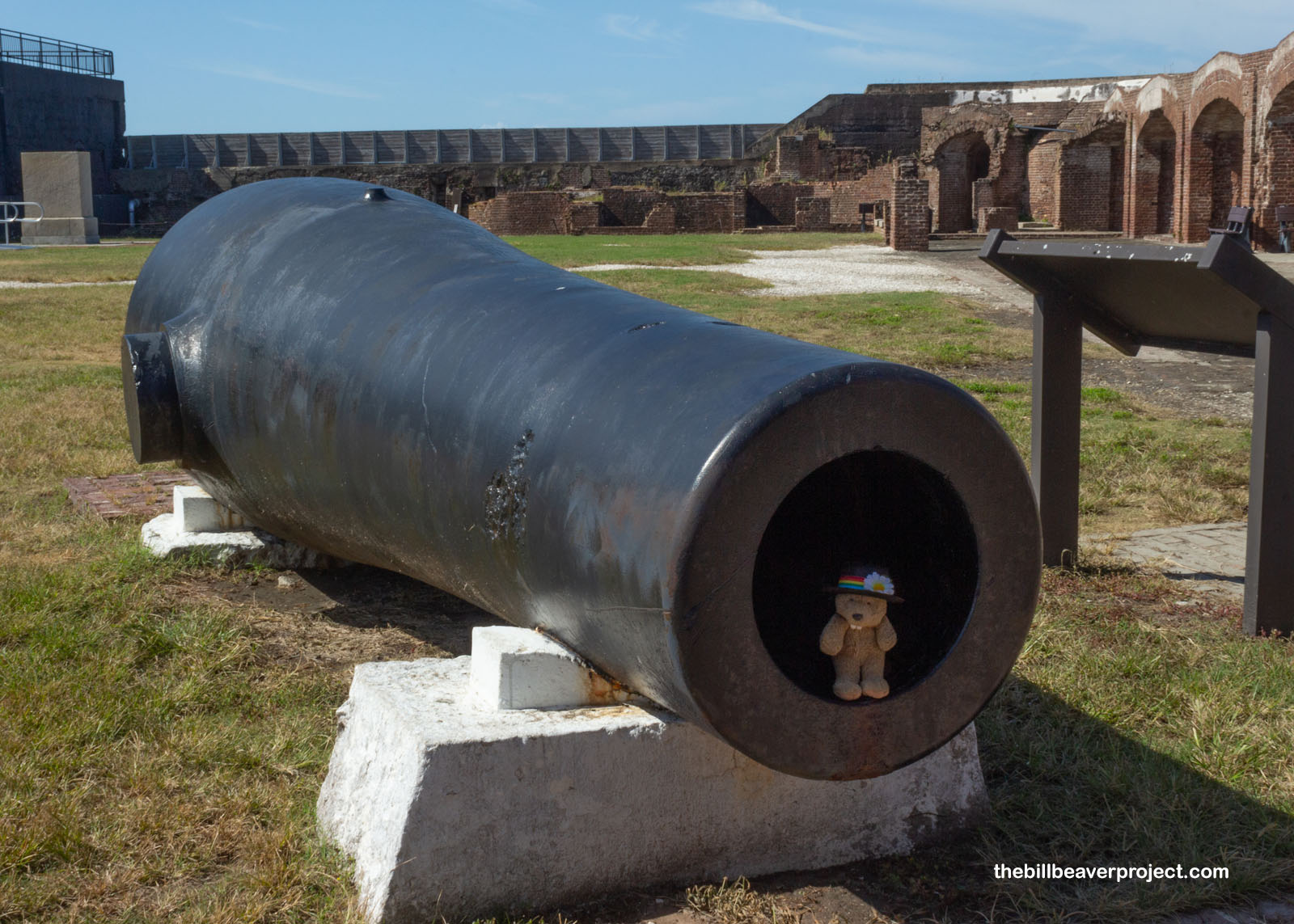 |
How any of the fort’s walls survived the nonstop 34 hours of bombardment, and the later Union attacks in 1863, is a wonder! The Gorge Wall originally held offices, apartments, and the powder magazine, but it was completely destroyed in the first bombardment. During Confederate occupation, the wall was rebuilt and reinforced with sandbags and cotton bales, making it stronger than before and enabling at least these remnants to survive to today!
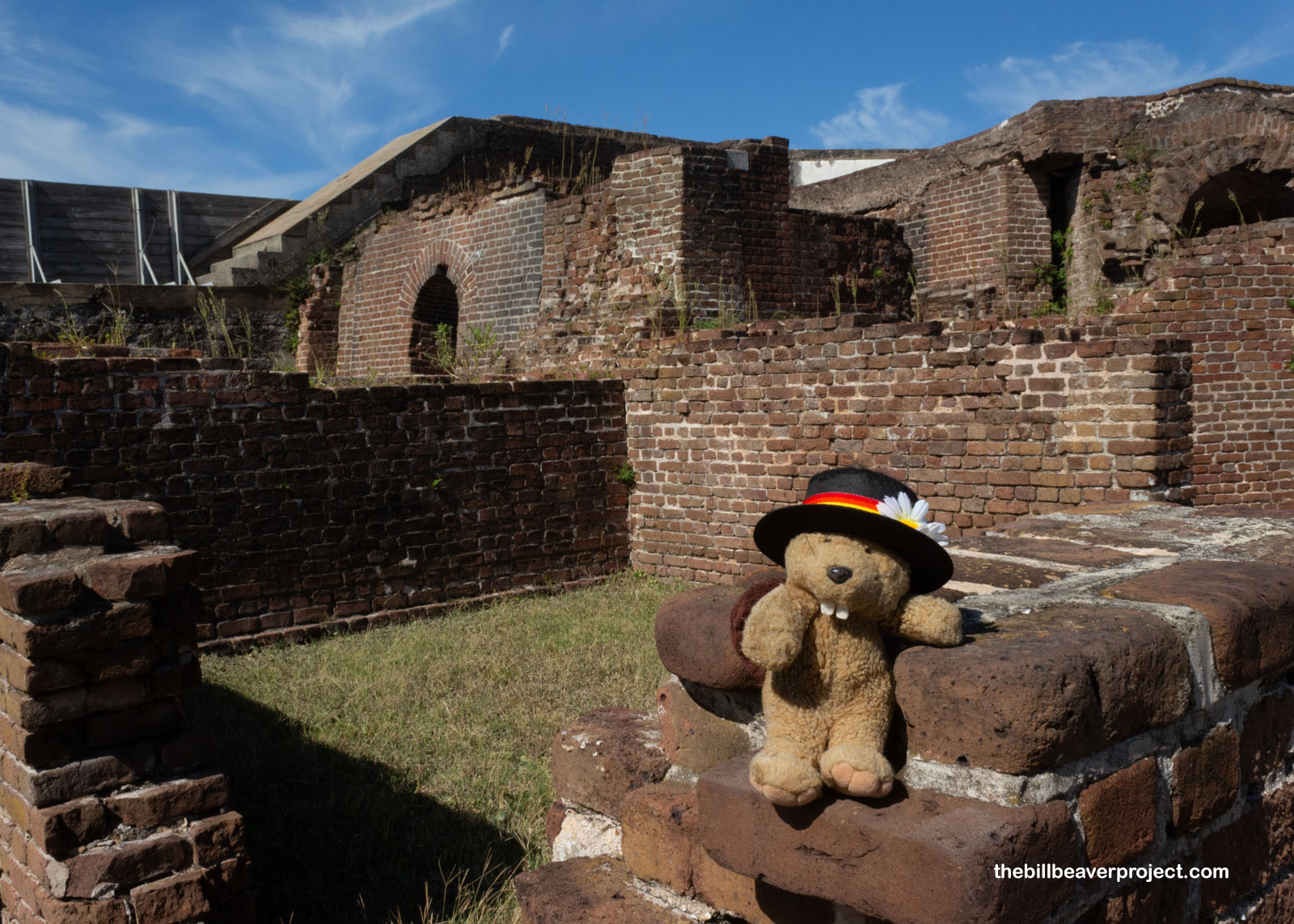 |
The fort was stronger when the Union came back, almost exactly two years later, reinforced by 500 enslaved laborers and armed with 40 mounted cannons. The first bombardment by a fleet of ironclads didn’t go so well, defeated by low tides and bickering between the Army and the Navy! Technically, the Union didn’t conquer Fort Sumter again; it was only after General Sherman had burned his way through South Carolina that the Confederates abandoned Charleston on February 17, 1865 and, by default, Fort Sumter.
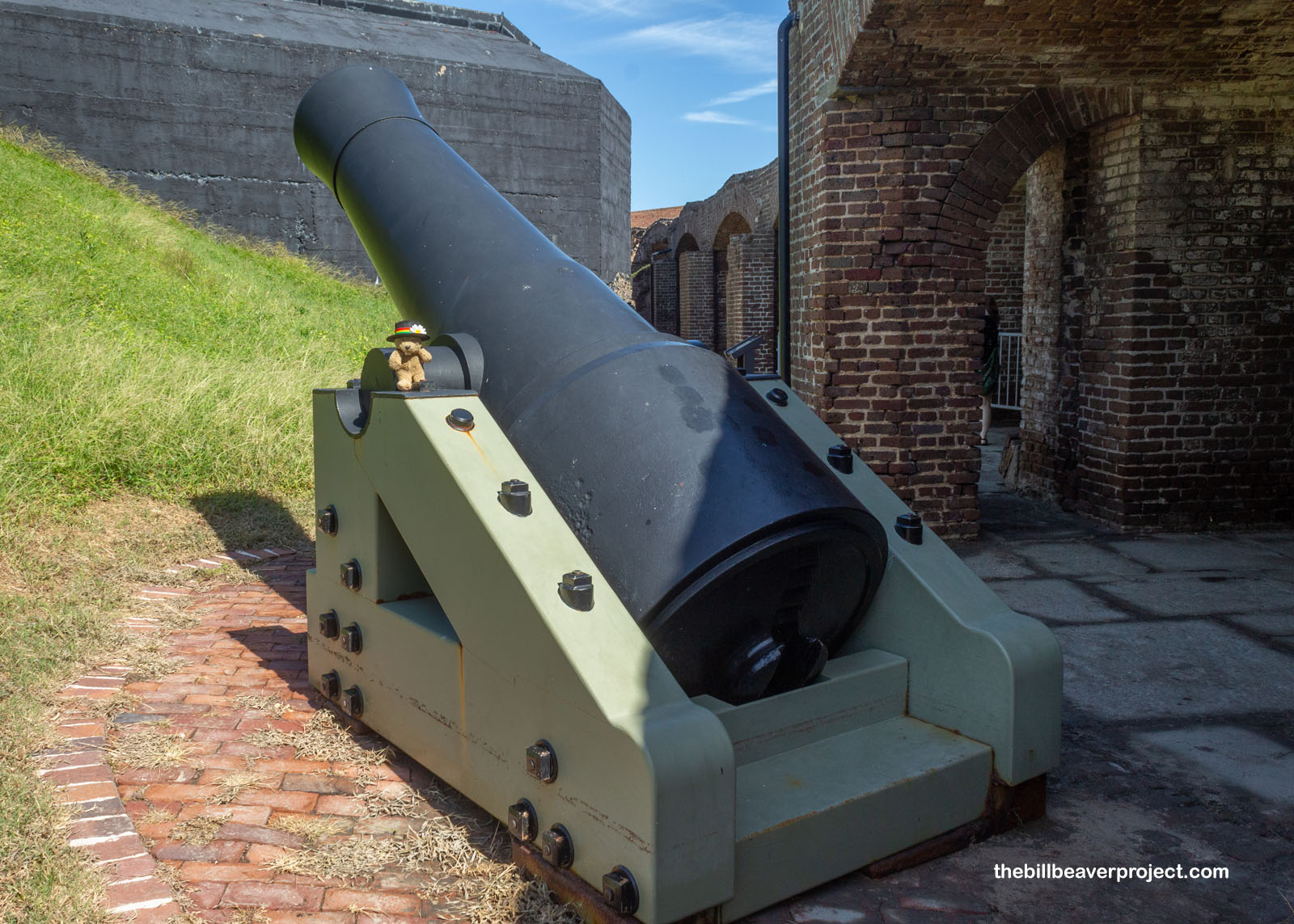 |
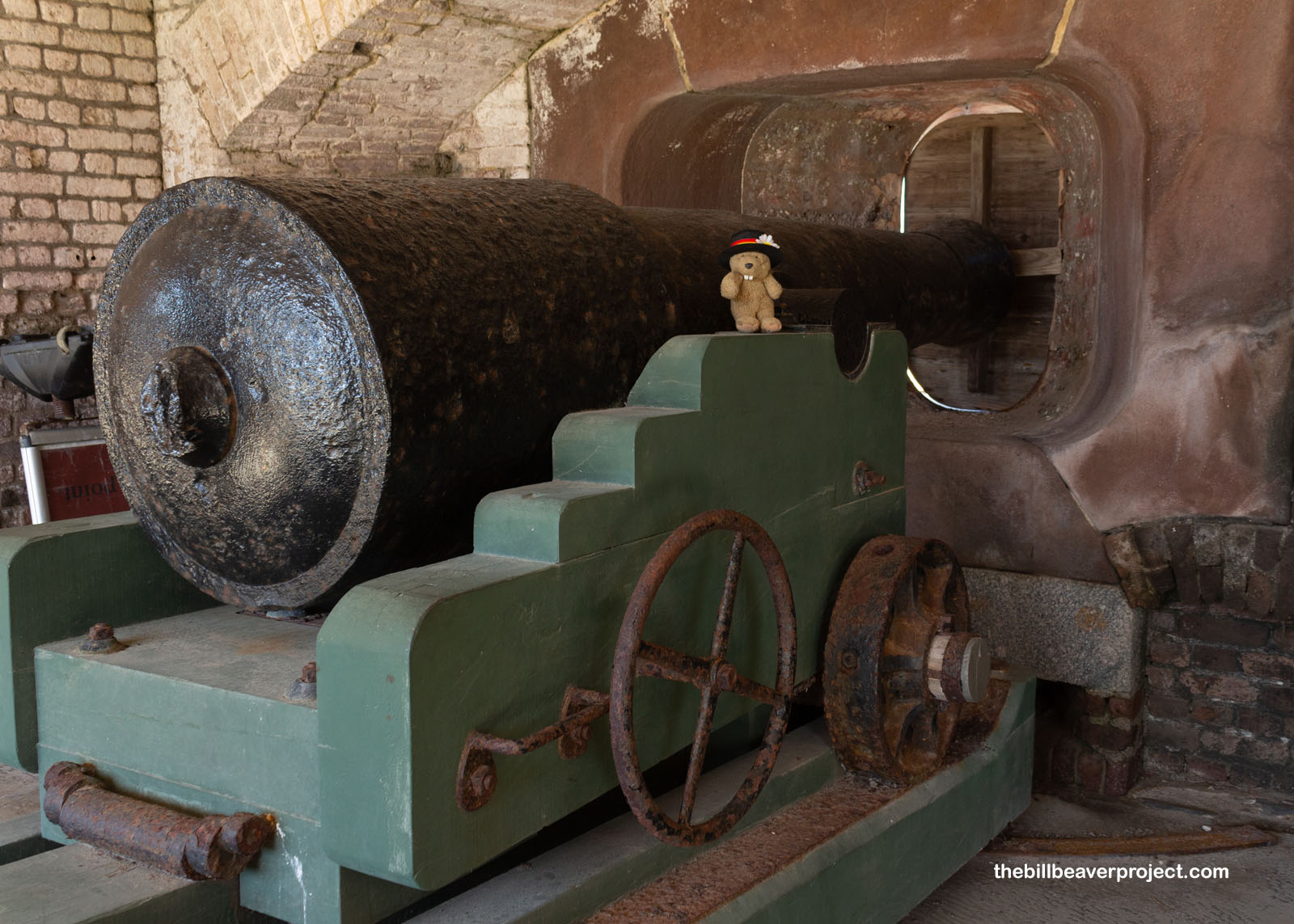 |
After the Civil War, the Army restored the fort for use as a lighthouse station and defense in the Spanish-American War. They heavily reinforced it with concrete and 12-inch M1888 guns, calling it Battery Huger, after a different Revolutionary War hero, Isaac Huger, and it was ready to defend Charleston Harbor from foreign threats until… the Germans invented the U-Boat and completely changed the nature of maritime warfare!
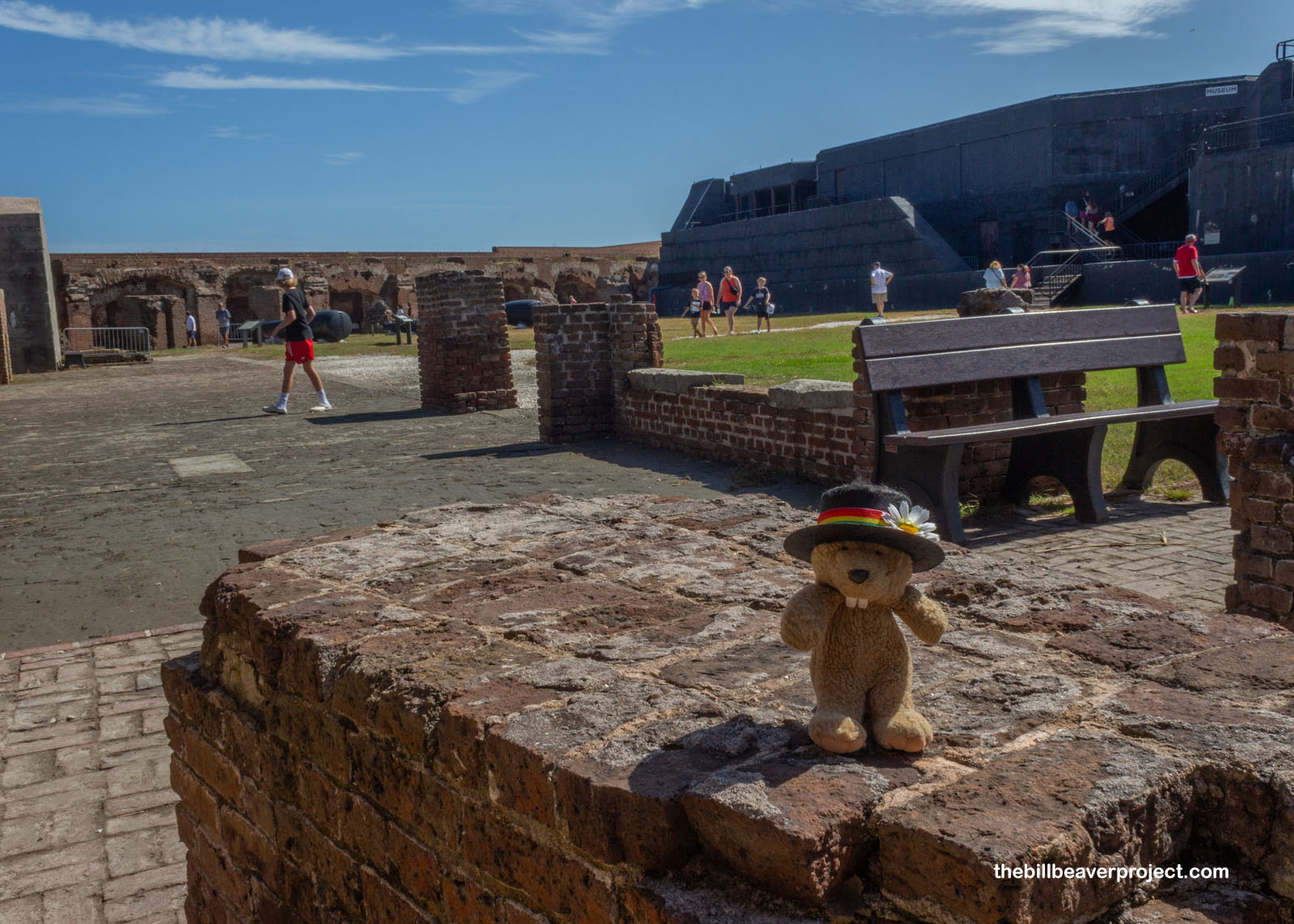 |
Just like at Fort Matanzas, time at Fort Sumter was limited, and after only one hour, we were all back on the ferry to the mainland. From there, it was time to see Part 2 of this national historical park all the way over on Sullivan’s Island (the most expensive ZIP Code in South Carolina, per the ranger). That was Fort Moultrie!
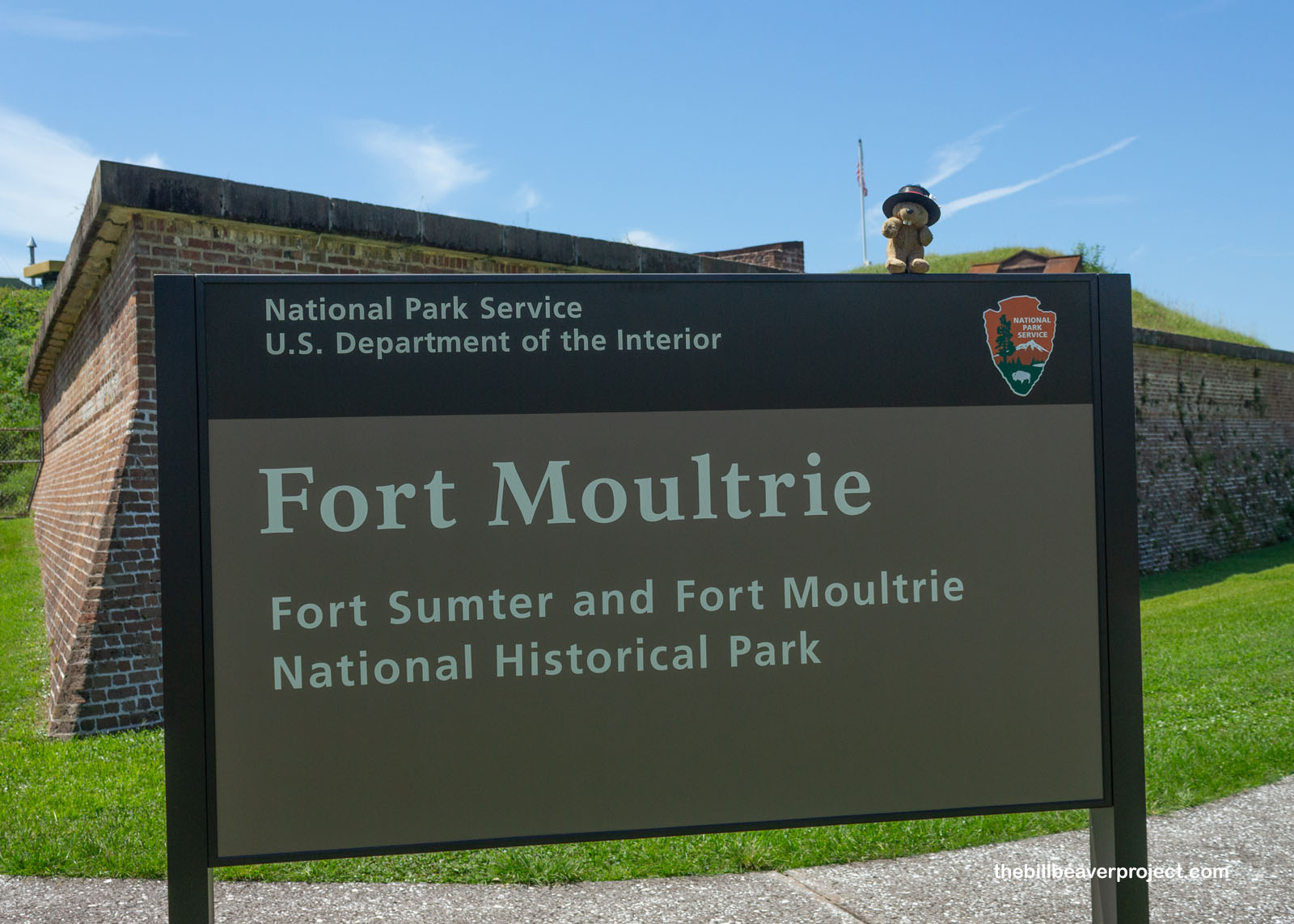 |
There’s so much history in and around these walls, starting with the modest tomb of Osceola, the Seminole leader who led the longest, most costly war between Native Americans and the United States, and who spent his final month as a prisoner here. Edgar Allan Poe served here for a year and was promoted for his mechanical skills! In short, I could tell right away how Fort Moultrie needed to be part of this park’s name!
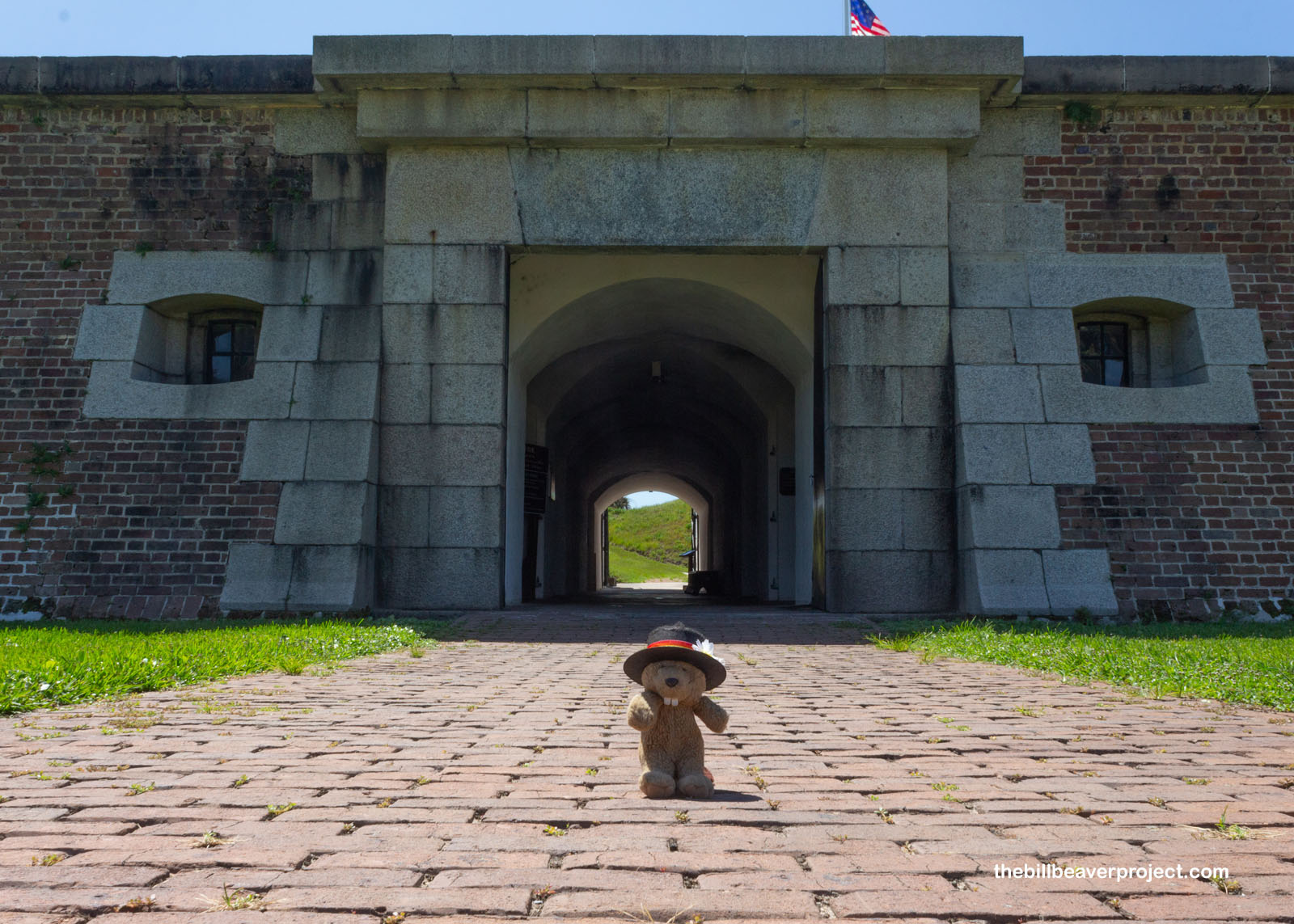 |
This is Fort Moultrie’s third incarnation! Walking counter-clockwise told the tale of how it evolved, from a palmetto log improvisation during the Revolutionary War to its second version as a Confederate stronghold during the Civil War. The fort was in a super unique position in Charleston Harbor, since sandy shoals forced ships to pass very close to this fort on their way in and out, putting them right in range for bombardment by cannons like these ones!
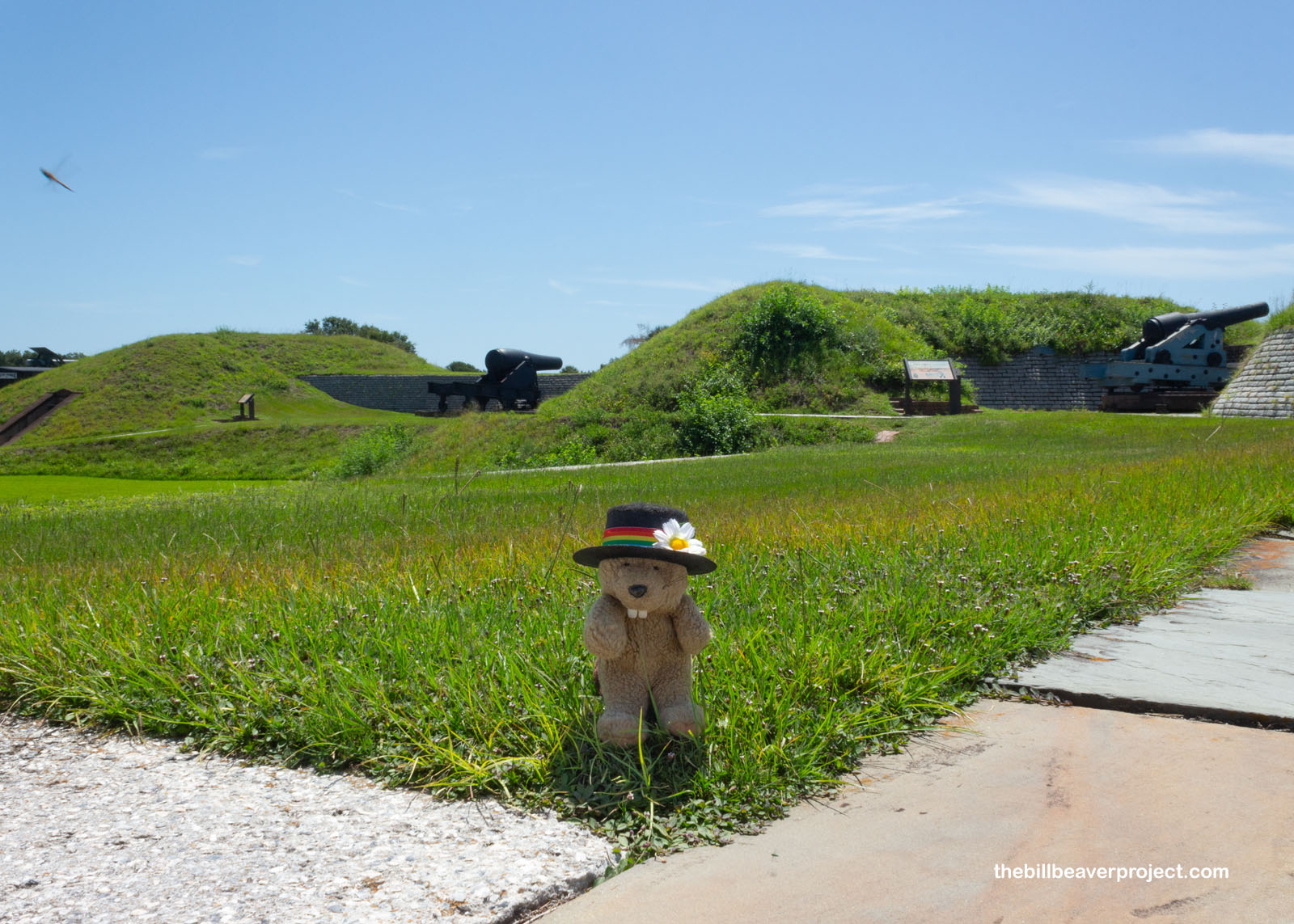 |
 |
But Fort Moultrie didn’t fall out of use following the Civil War! Far from it. Simply put, it was in too good of a spot to waste! So the fort got, well, fortified in the years following the Civil War and was ready to face new threats in World Wars I and II!
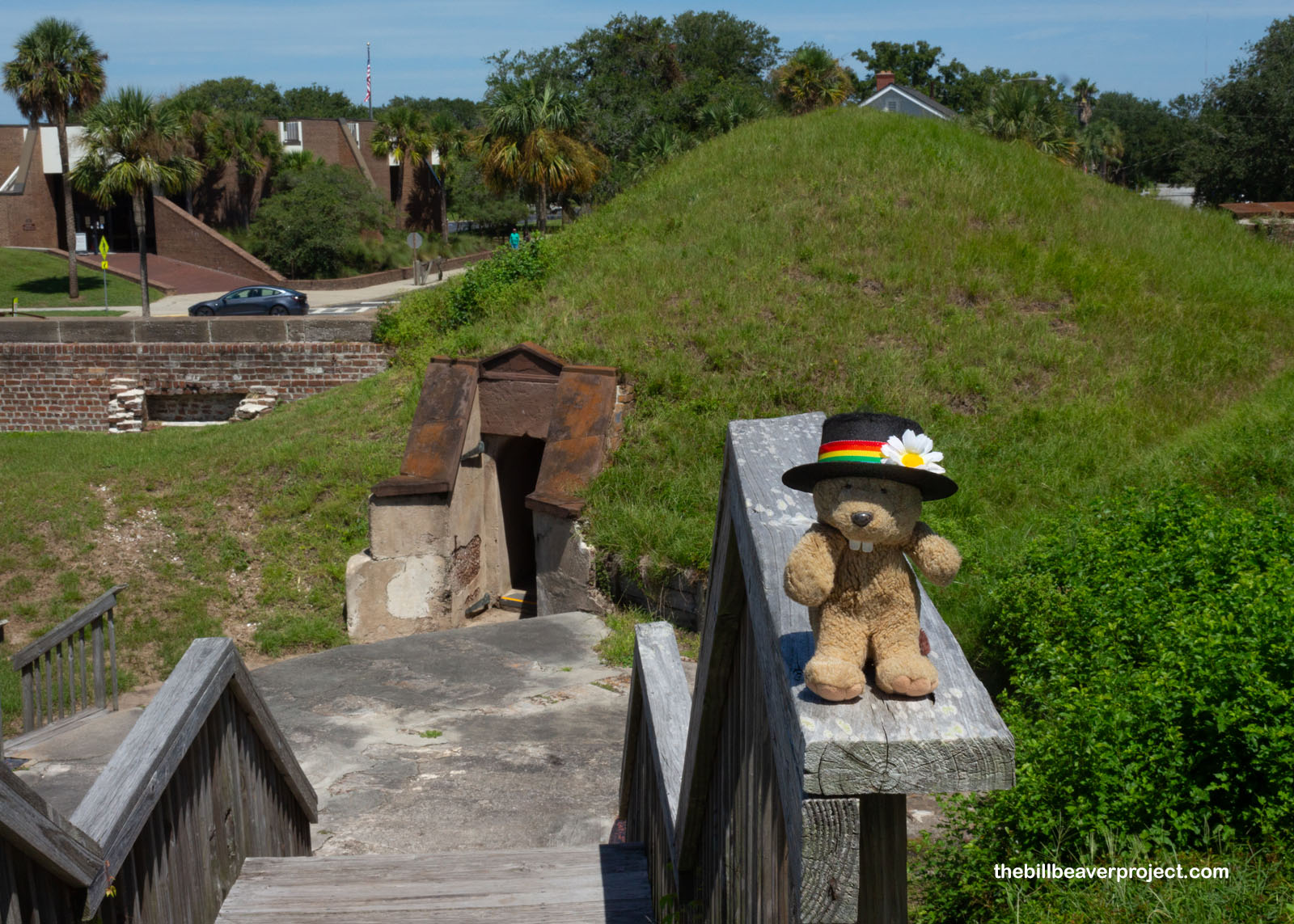 |
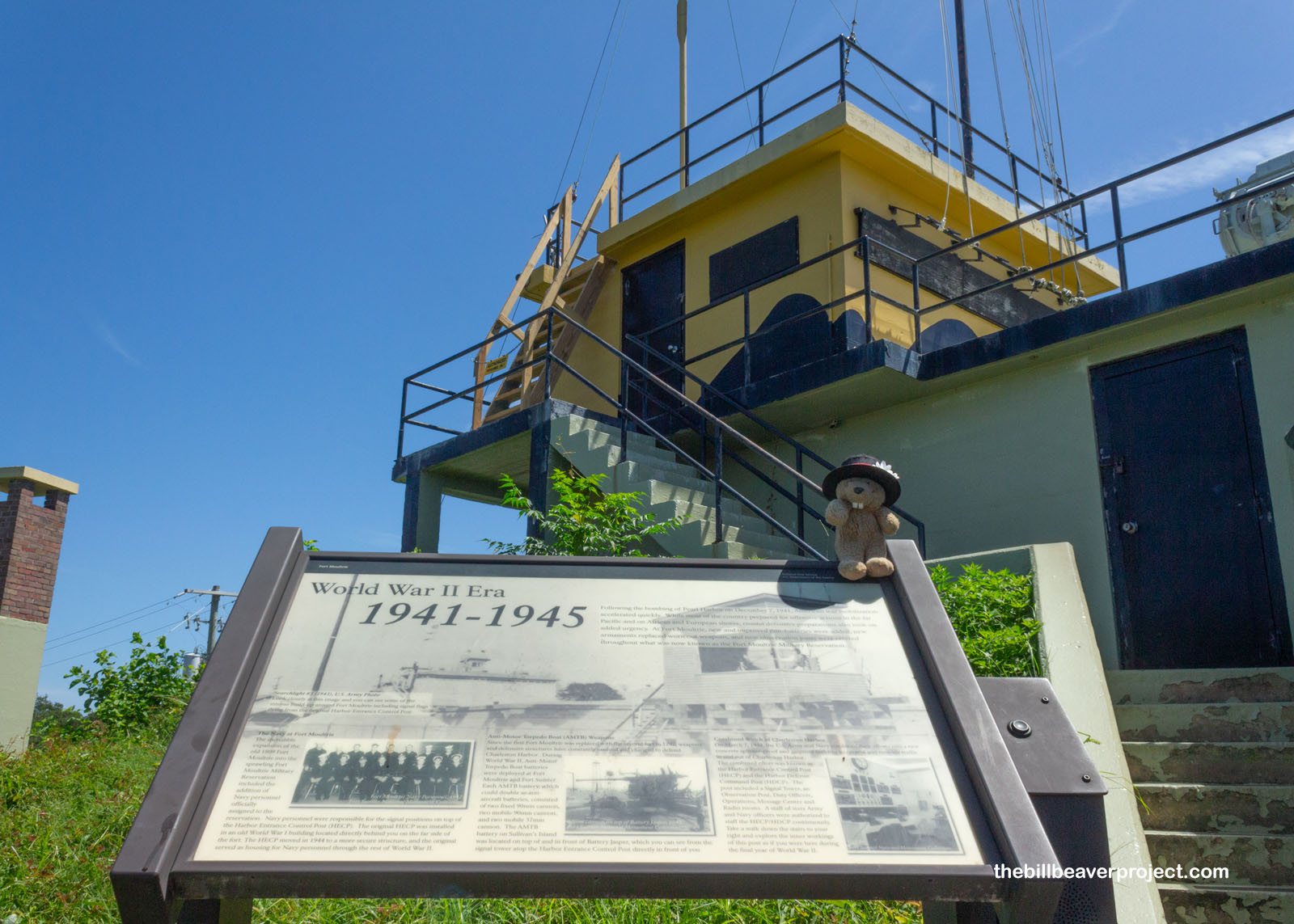 |
To ward off submarines, there was an underwater mine field offshore, protected by Batteries Bingham and McCorkle! With the rise of airplanes, anti-aircraft guns replaced cannons! As war evolved, so did Fort Moultrie, and today, this piece of the National Historical Park tells one of the most expansive stories about this evolution in one walled space!
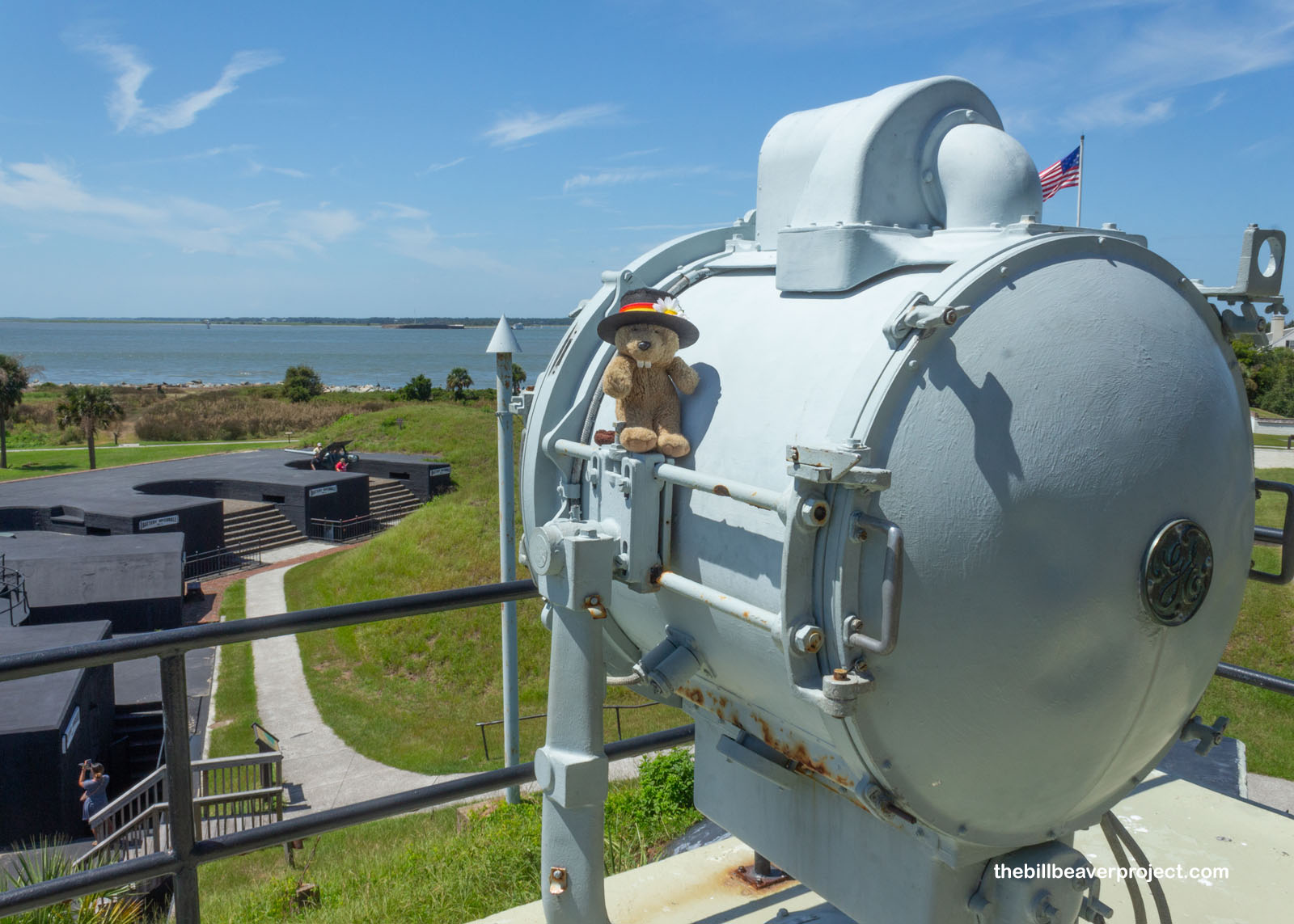 |
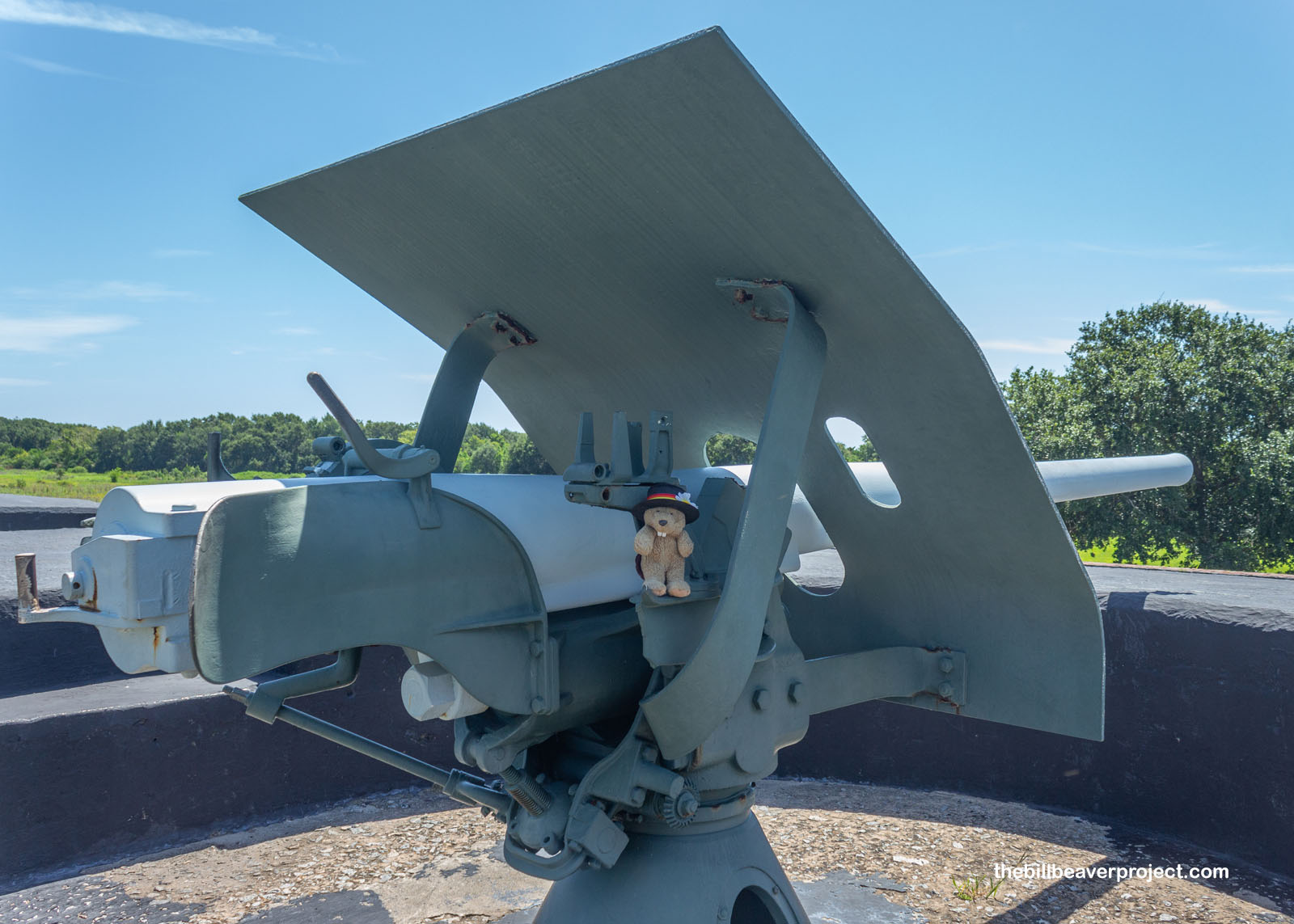 |
From Fort Moultrie, I was southbound to another park, a pretty new one, designated in March of 2017, then re-designated on March 12, 2019. This was Reconstruction Era National Historical Park, four small sites located in and around the historic town of Beaufort (pronounced Byoo-furt by the locals)!
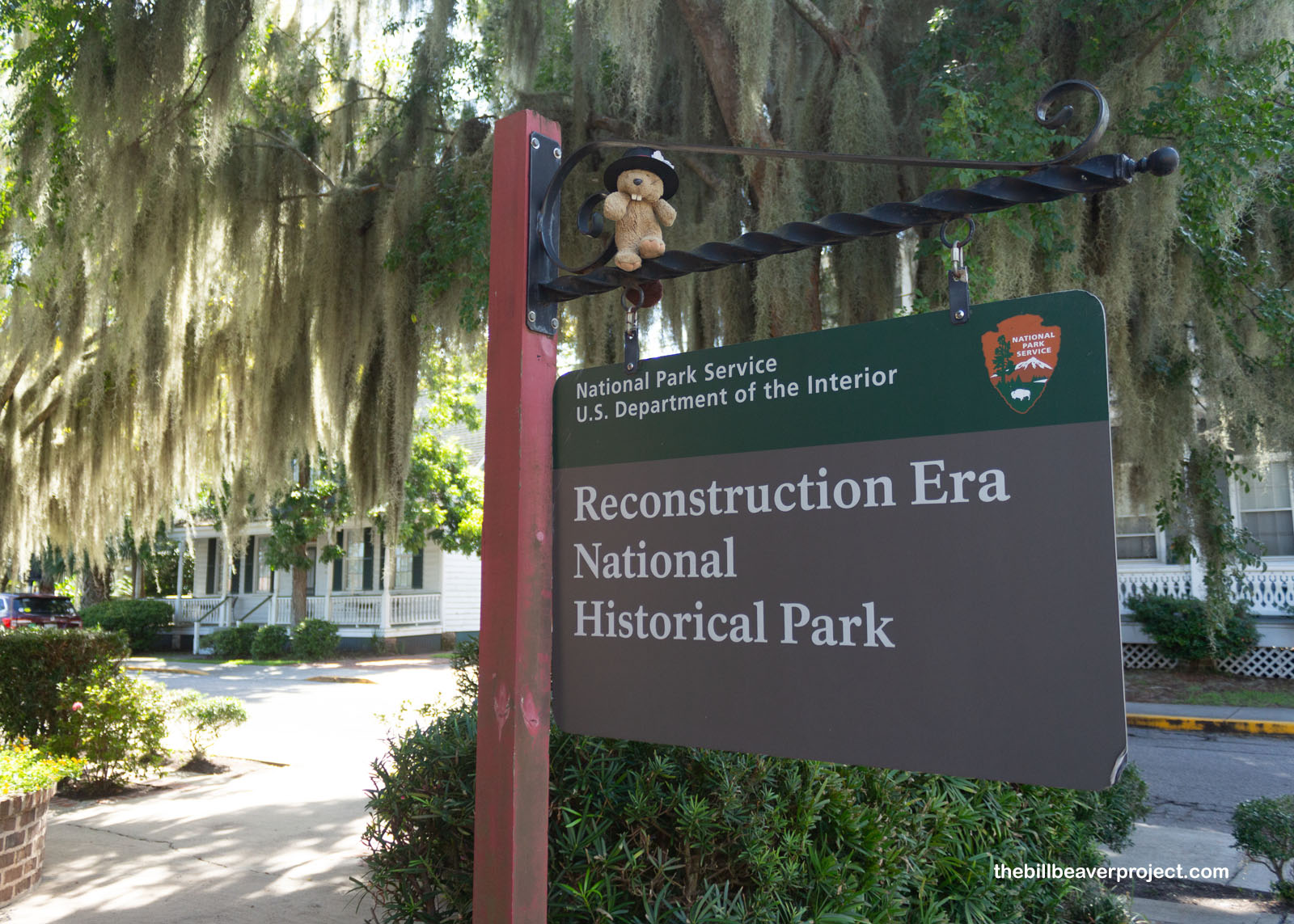 |
While Fort Sumter set off the first spark, Beaufort (founded 1710) had to deal with lots of the aftermath of war. With a majority Black population since 1730, including the unique Gullah Geechee culture, Beaufort was ground zero for figuring out how to integrate newly liberated Black folks into free society between 1861 and 1900! The fire station that is now the park’s visitor center came much, much later, but it was a great starting point for a stroll!
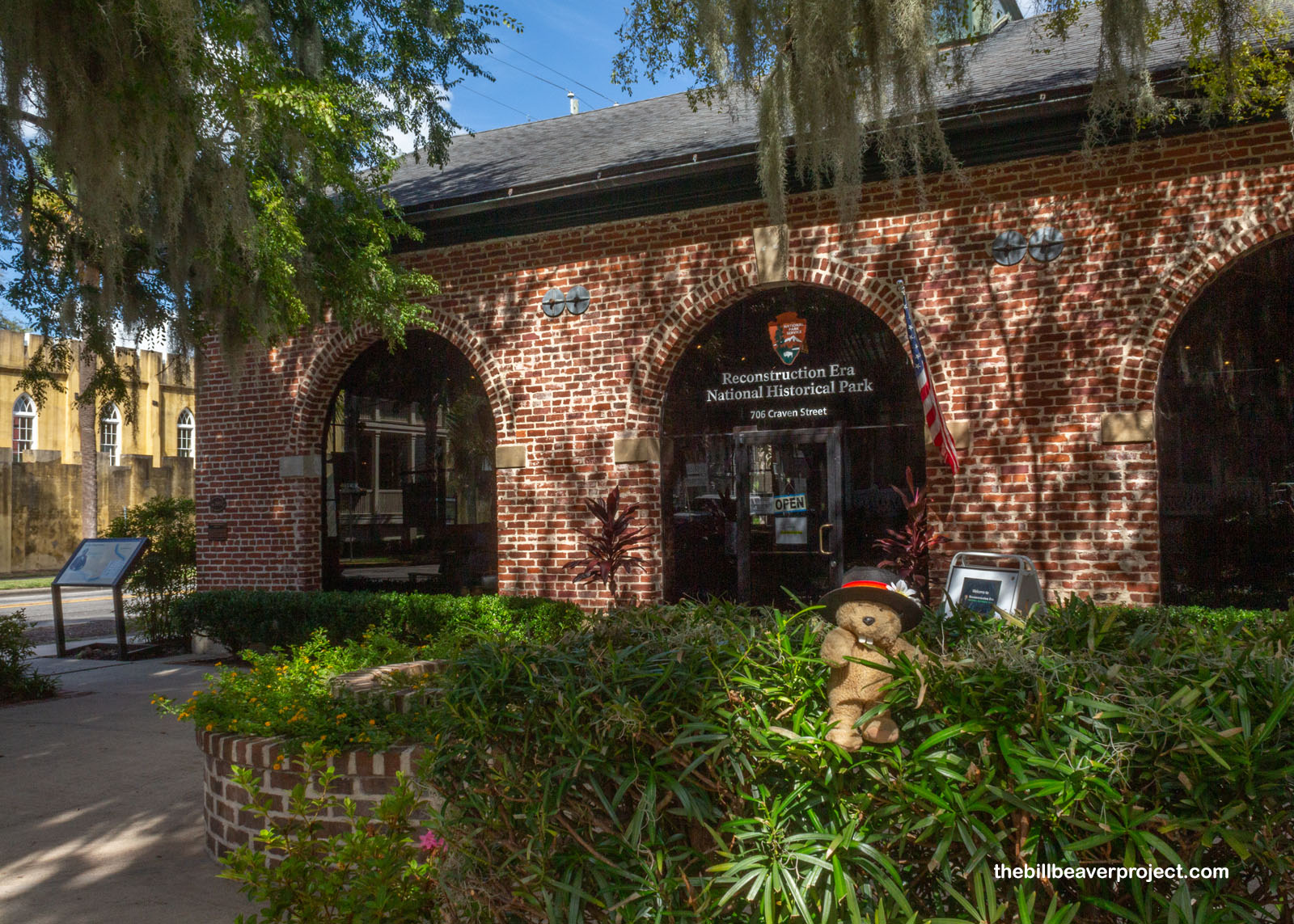 |
Almost immediately, I passed the Beaufort Arsenal, not part of the park but definitely part of the story. The Beaufort Volunteer Artillery used this as their headquarters before the war, and from here, they ran slave patrols around the city. The National Guard kicked them out after the war and helped to convert it from an active military installation to a museum in the 1920s!
 |
Just up the street was the house of Robert Smalls (remember his nautical escape earlier?). After he reached freedom and served in the Army and Navy, he co-owned a store in Beaufort, invested in the Enterprise Railroad, and was elected to Congress! This house shows he did quite well for himself!
 |
But back to the actual park, further down the road on St. Helena Island stood the Brick Baptist Church! In 1855, enslaved folks built a church that they weren’t allowed to use, and even today, some of their fingerprints are visible in the bricks. All that changed in 1862 when the Union liberated the sea islands of South Carolina and Georgia, newly freed Black folks got to use the church, and it gave rise to one of the first ever schools for newly emancipated folks!
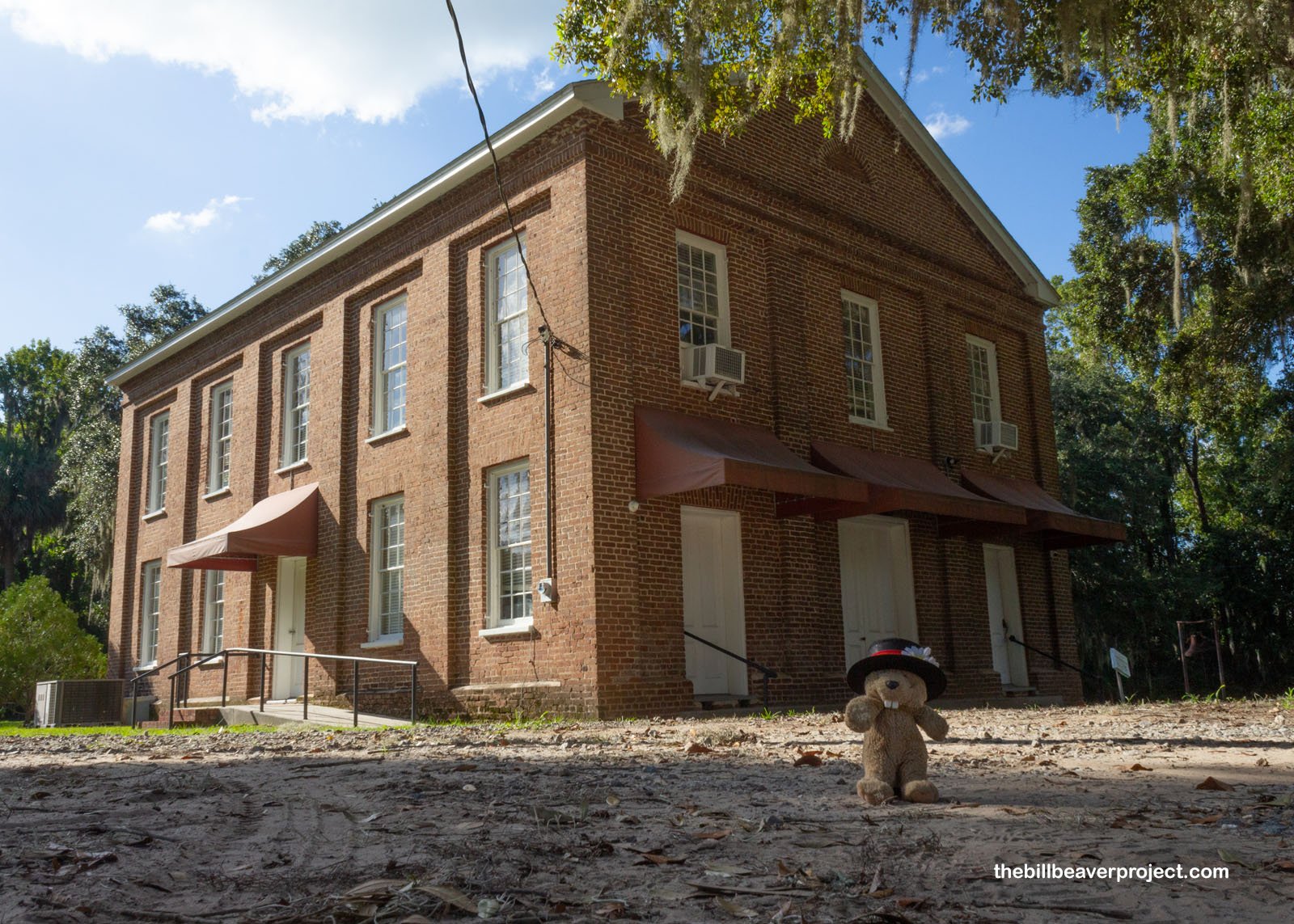 |
That school became the Penn School, founded by missionaries, Lauren Towne, Ellen Murray, and Charlotte Forten in 1862, when it was still a crime throughout most of the South to teach a Black person to read! The community center, named for Ms. Towne’s sister, Sophia Towne Darrah, is the oldest building still surviving from the school’s early days, rebuilt by students in 1893 after a devastating hurricane!
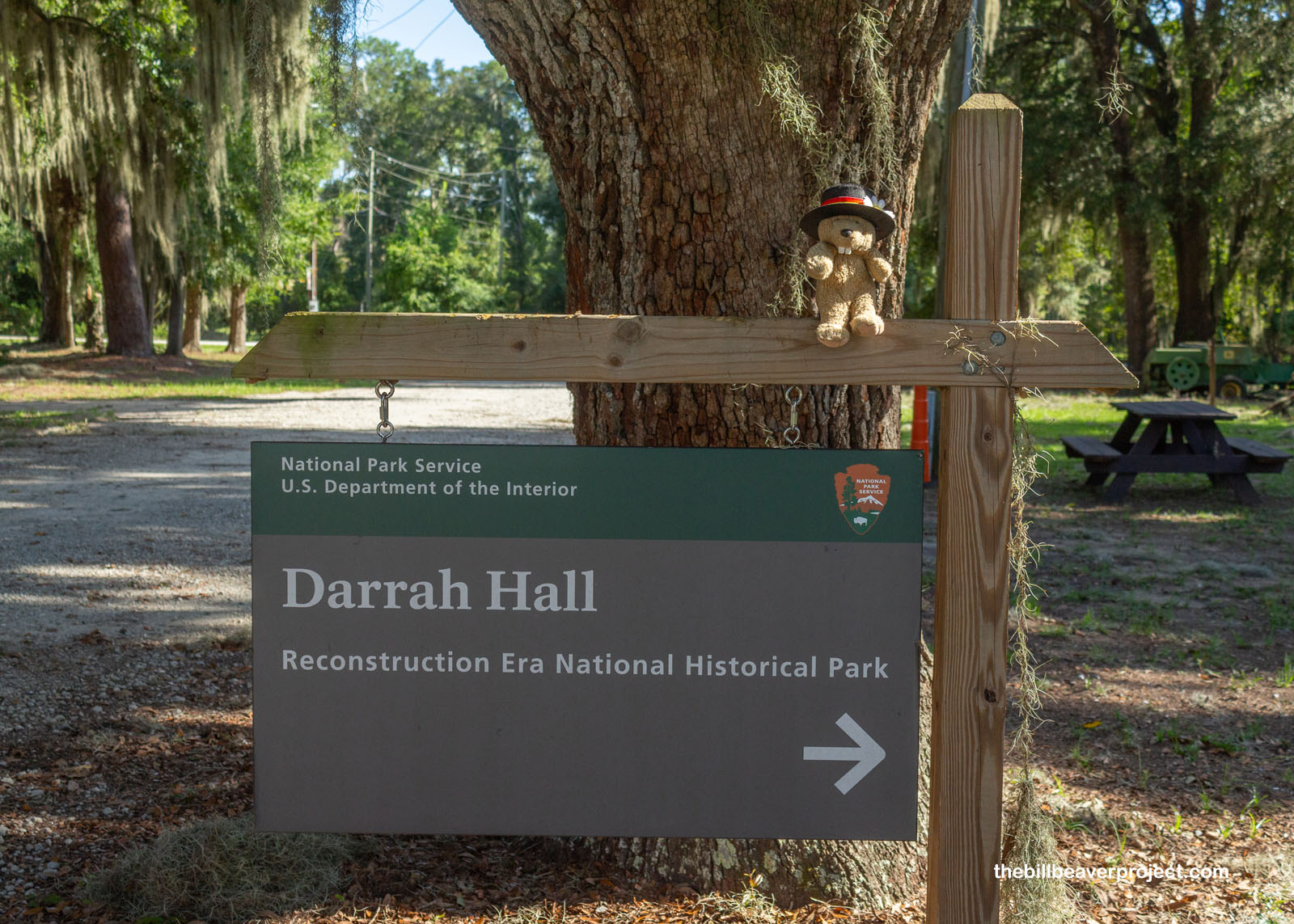 |
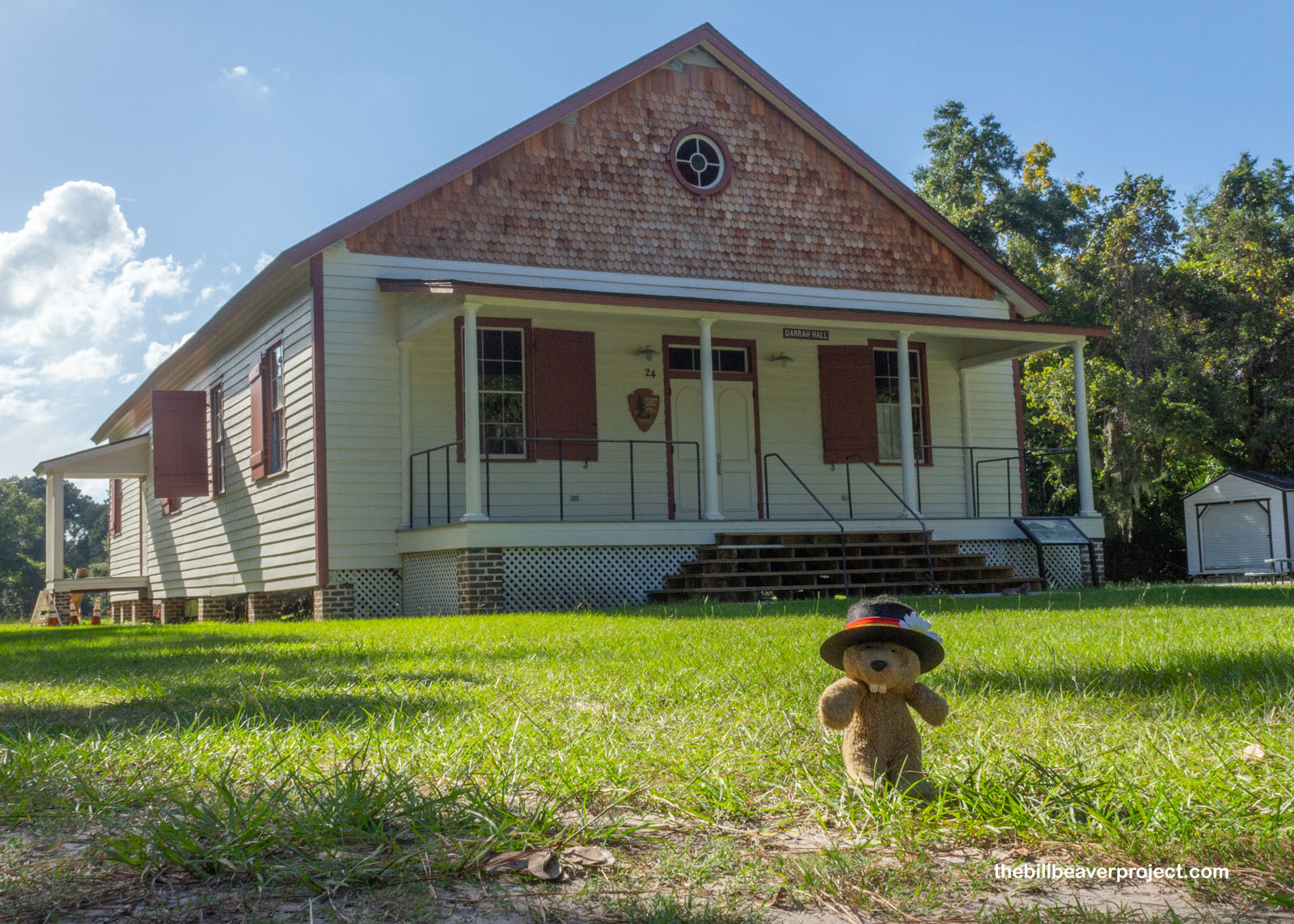 |
My fourth, and final stop on the tour of Reconstruction Era National Historical Park was at Pinckney Porter’s Chapel, a small chapel built by and for freedmen, at least, originally. It was rebuilt in 2020 and now serves as an interpretive center for Camp Saxton, where one of the first all-Black Army regiments assembled in 1862 and where they heard the Emancipation Proclamation read aloud on January 1, 1863!
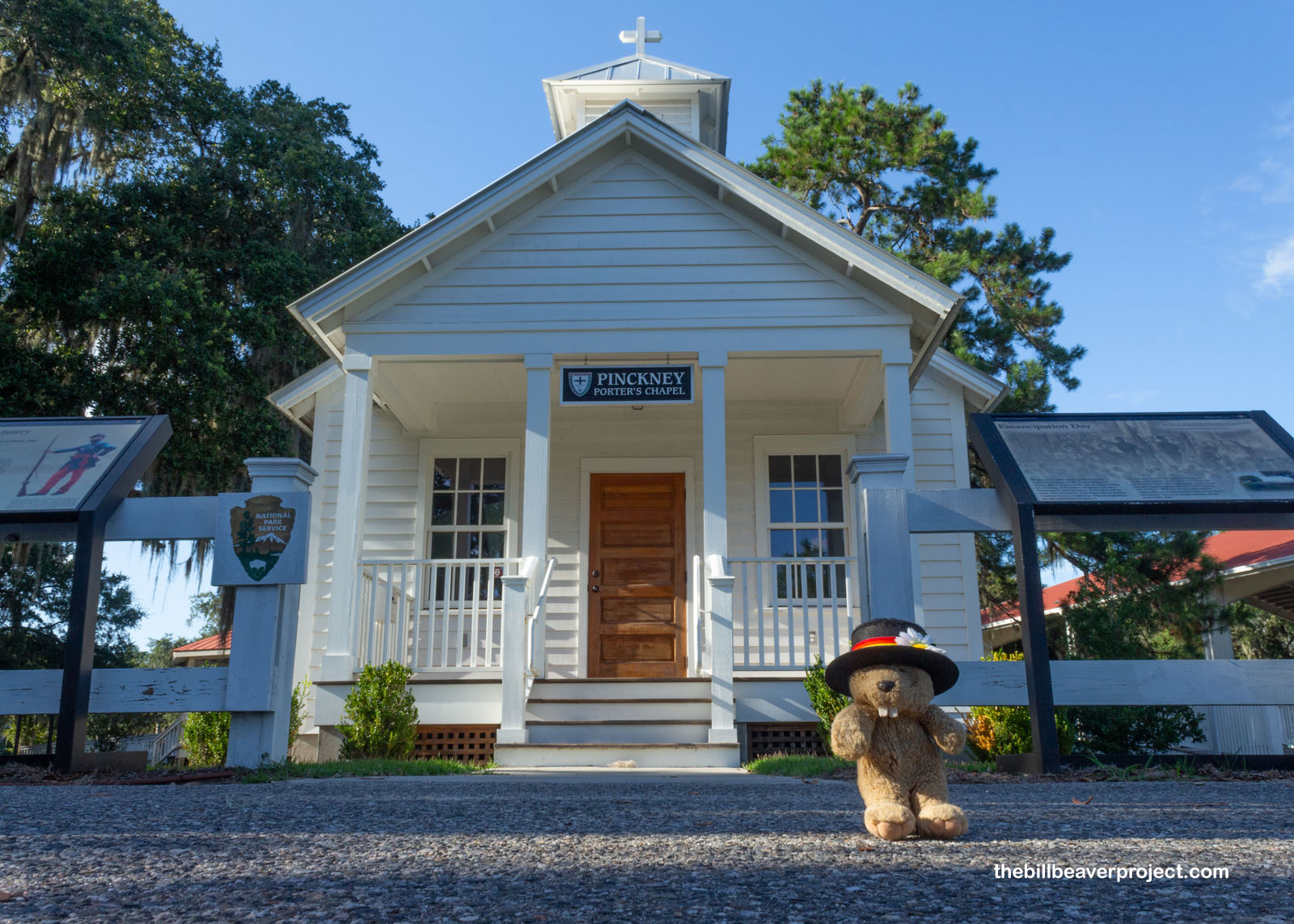 |
Most of the camp site, and the Emancipation Oak, were behind the fences of Naval Hospital Beaufort, but nearby Fort Frederick was as close as a beaver could get to that piece of history! Originally a British fort in the 1730s, by the time the 1st South Carolina Volunteer Infantry was training here 130 years later, it had become part of a dock for use by the camp!
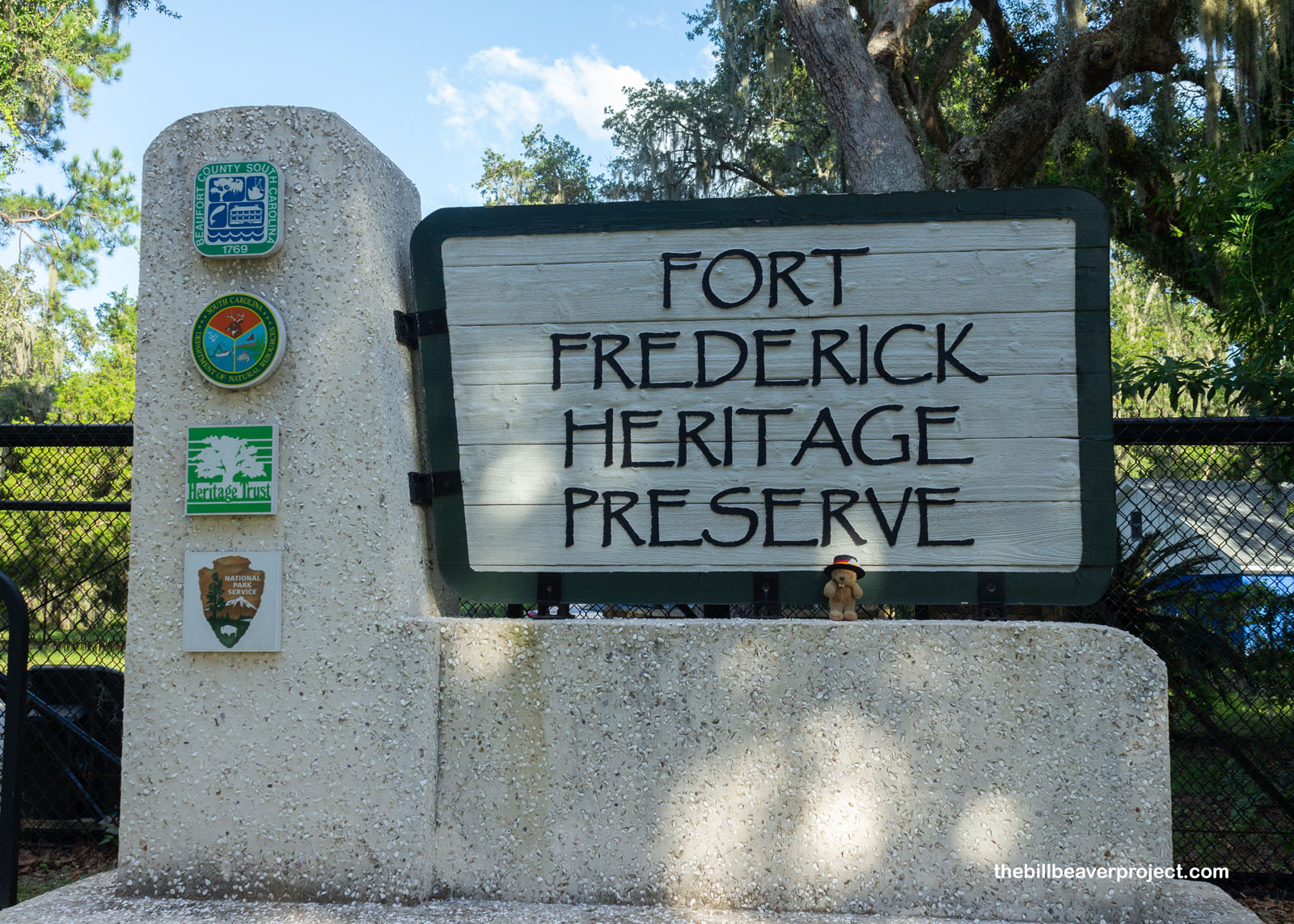 |
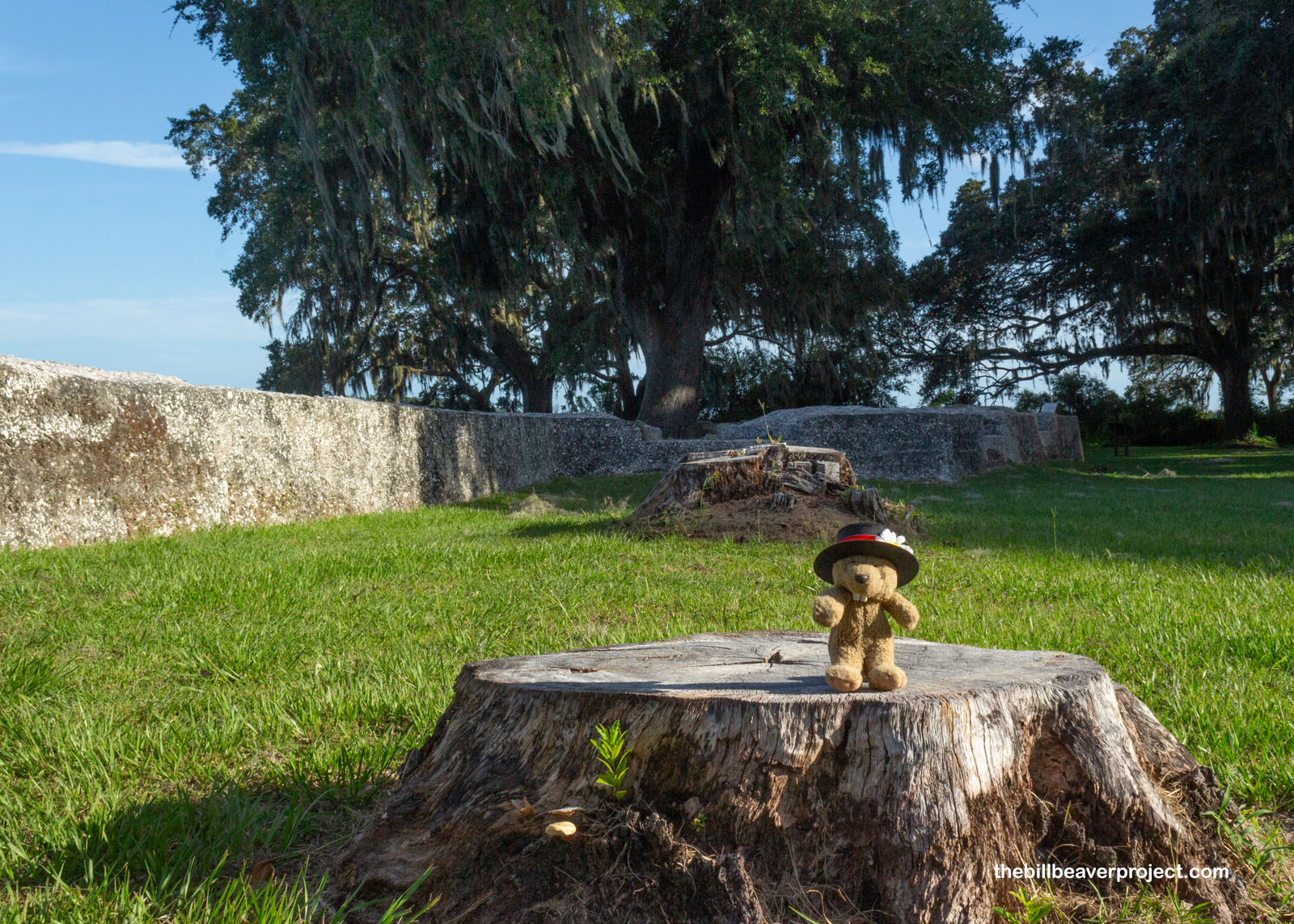 |
And then Day 1 of this Labor Day Weekend adventure wrapped up! I ordered up some fried oysters from a food trailer called Gullah Express and learned the true meaning of “fried to perfection!” Then guzzled down some peachy Gullah Punch and headed south to Savannah. Checking into the Days Inn, I was ready to rest up in preparation for the next day’s adventure!
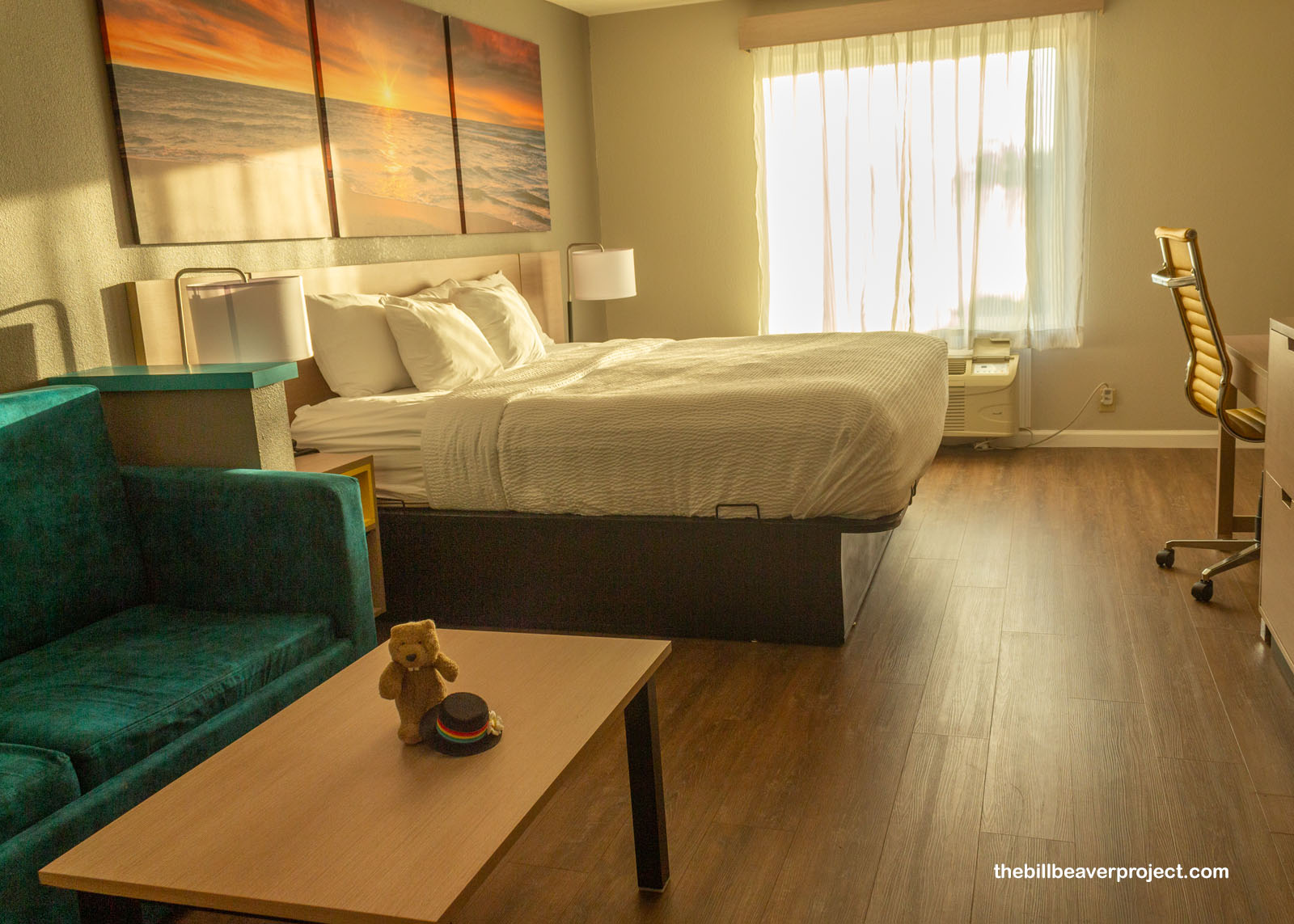 |
Tomorrow, I’ll be exploring two more coastal forts, completing the Sea Island circuit across two wars! The history’s heating up, or maybe it’s just the Southern summer.
Good fort-une to you!

 More 2023 Adventures |
Total Ground Covered: 164.8 mi (265.2 km) |
 Next Day |
